Quick filters:
Budding hydra bud Stock Photos and Images
 Green hydra with bud Chlorohydra viridissima Stock Photohttps://www.alamy.com/image-license-details/?v=1https://www.alamy.com/green-hydra-with-bud-chlorohydra-viridissima-image4882918.html
Green hydra with bud Chlorohydra viridissima Stock Photohttps://www.alamy.com/image-license-details/?v=1https://www.alamy.com/green-hydra-with-bud-chlorohydra-viridissima-image4882918.htmlRMAKCHE7–Green hydra with bud Chlorohydra viridissima
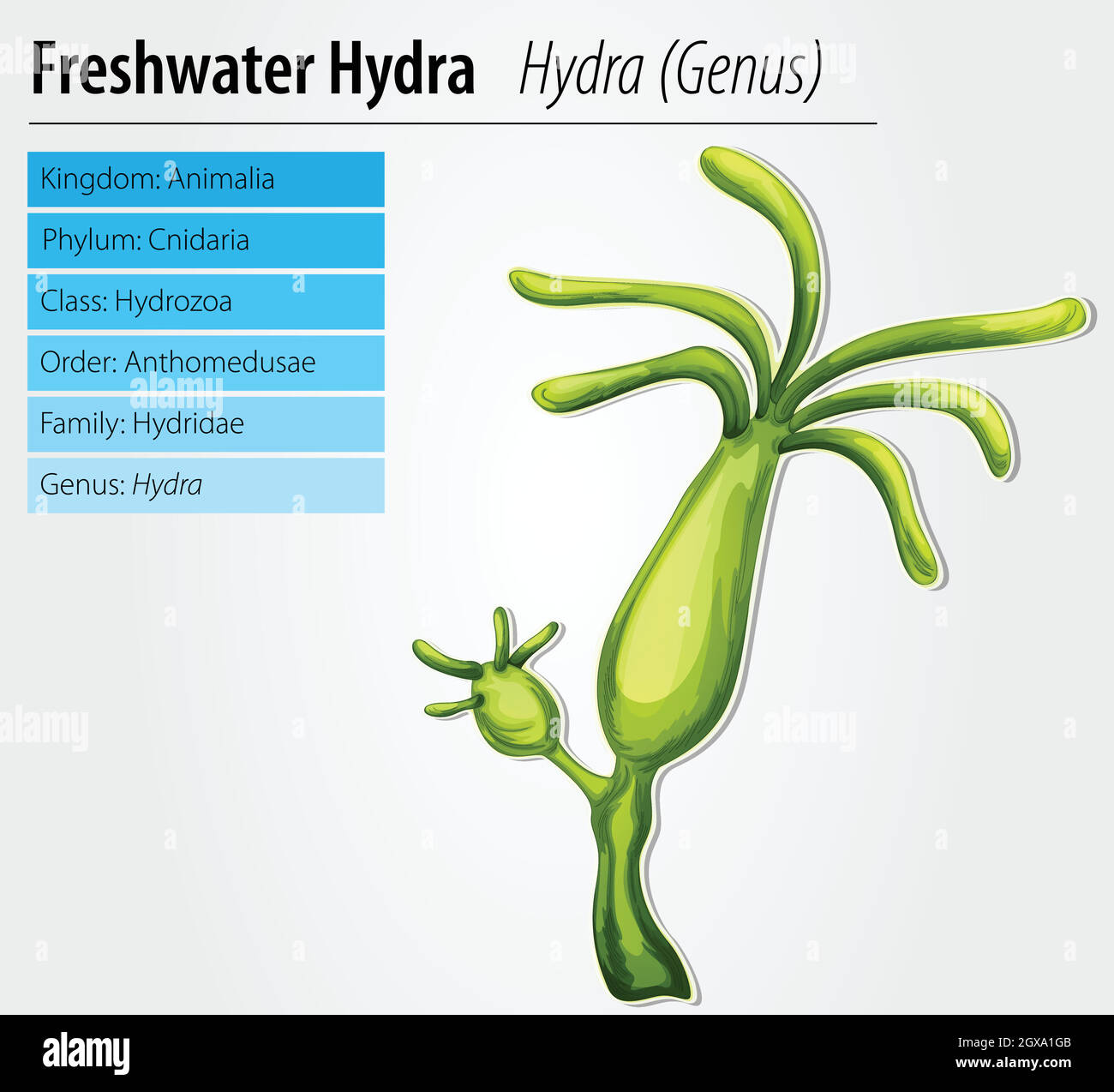 Freshwater hydra Stock Vectorhttps://www.alamy.com/image-license-details/?v=1https://www.alamy.com/freshwater-hydra-image446461019.html
Freshwater hydra Stock Vectorhttps://www.alamy.com/image-license-details/?v=1https://www.alamy.com/freshwater-hydra-image446461019.htmlRF2GXA1GB–Freshwater hydra
 Green Hydra (Chlorohydra viridissima) adult, in process of asexual reproduction with new bud just forming, attached to piece of Stock Photohttps://www.alamy.com/image-license-details/?v=1https://www.alamy.com/stock-photo-green-hydra-chlorohydra-viridissima-adult-in-process-of-asexual-reproduction-49036869.html
Green Hydra (Chlorohydra viridissima) adult, in process of asexual reproduction with new bud just forming, attached to piece of Stock Photohttps://www.alamy.com/image-license-details/?v=1https://www.alamy.com/stock-photo-green-hydra-chlorohydra-viridissima-adult-in-process-of-asexual-reproduction-49036869.htmlRMCRNR0N–Green Hydra (Chlorohydra viridissima) adult, in process of asexual reproduction with new bud just forming, attached to piece of
 Hydra, LM Stock Photohttps://www.alamy.com/image-license-details/?v=1https://www.alamy.com/stock-photo-hydra-lm-135010687.html
Hydra, LM Stock Photohttps://www.alamy.com/image-license-details/?v=1https://www.alamy.com/stock-photo-hydra-lm-135010687.htmlRMHRJ7E7–Hydra, LM
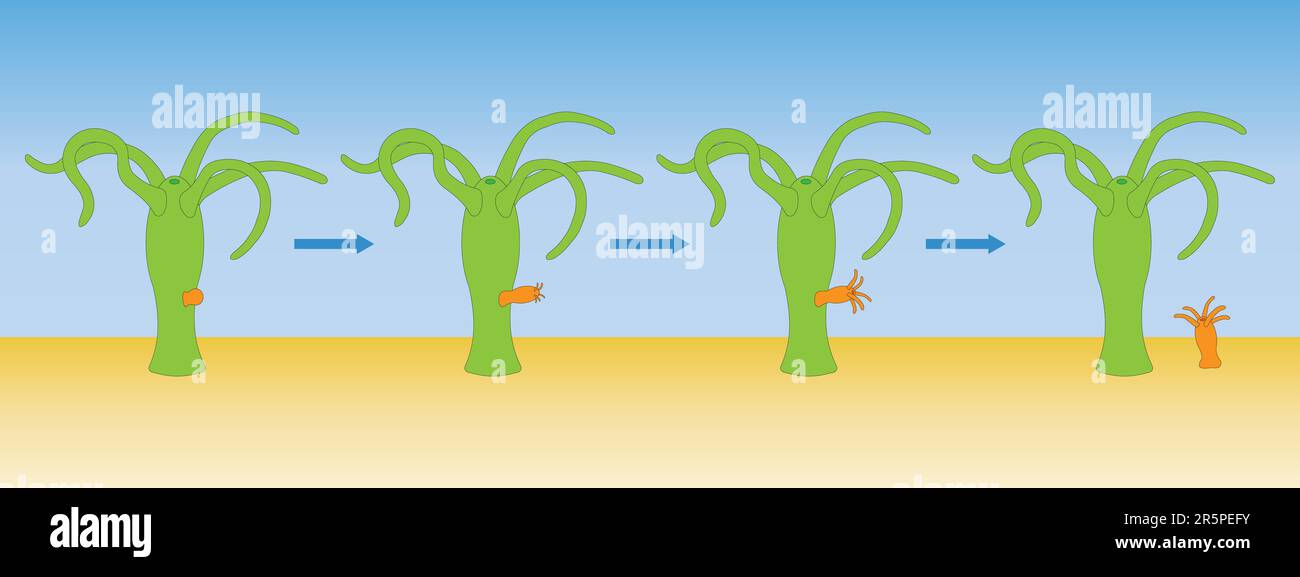 Hydra budding. Asexual Reproduction. Vector ilustration. Stock Vectorhttps://www.alamy.com/image-license-details/?v=1https://www.alamy.com/hydra-budding-asexual-reproduction-vector-ilustration-image554299423.html
Hydra budding. Asexual Reproduction. Vector ilustration. Stock Vectorhttps://www.alamy.com/image-license-details/?v=1https://www.alamy.com/hydra-budding-asexual-reproduction-vector-ilustration-image554299423.htmlRF2R5PEFY–Hydra budding. Asexual Reproduction. Vector ilustration.
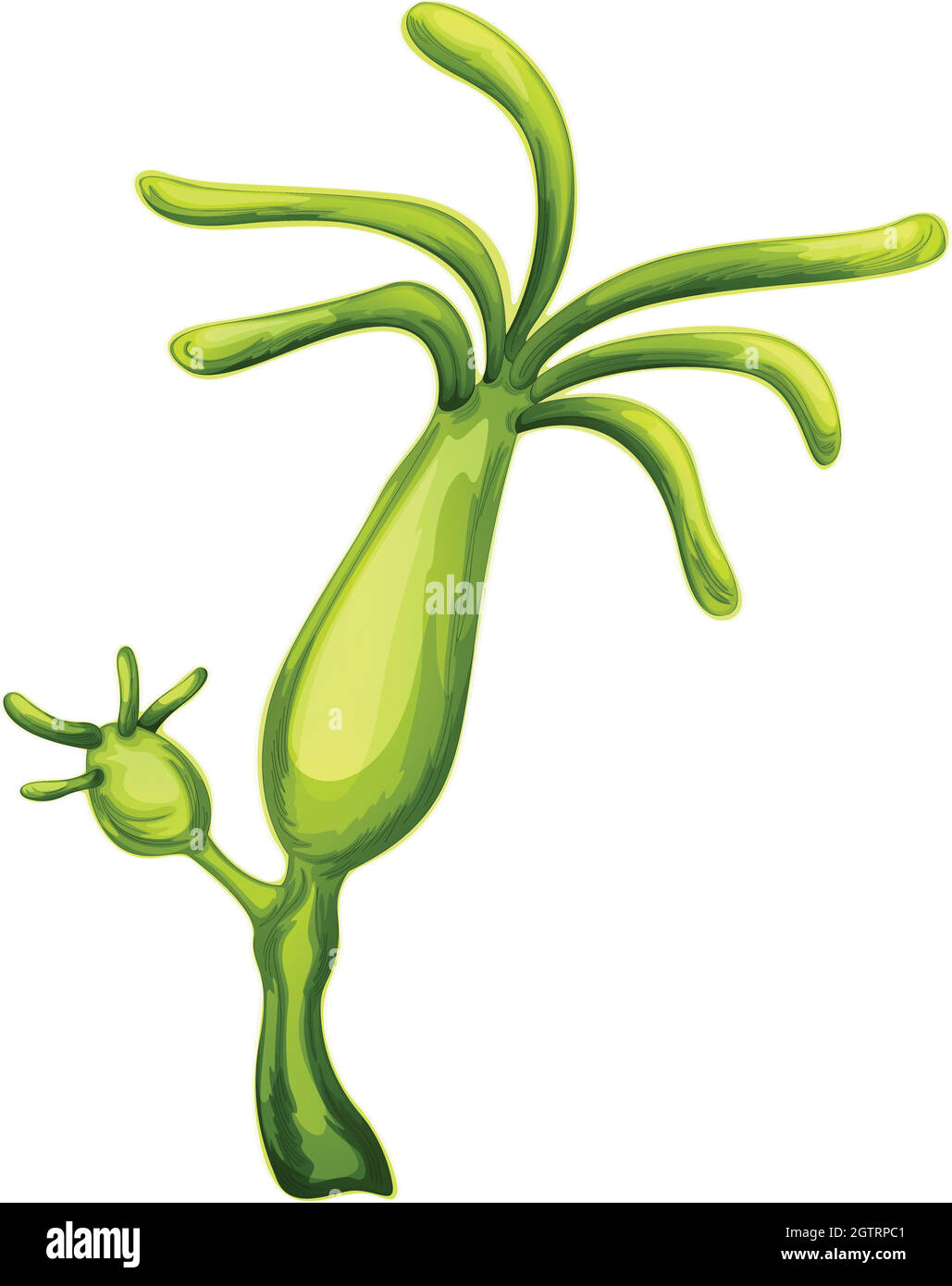 Hydra Stock Vectorhttps://www.alamy.com/image-license-details/?v=1https://www.alamy.com/hydra-image445533425.html
Hydra Stock Vectorhttps://www.alamy.com/image-license-details/?v=1https://www.alamy.com/hydra-image445533425.htmlRF2GTRPC1–Hydra
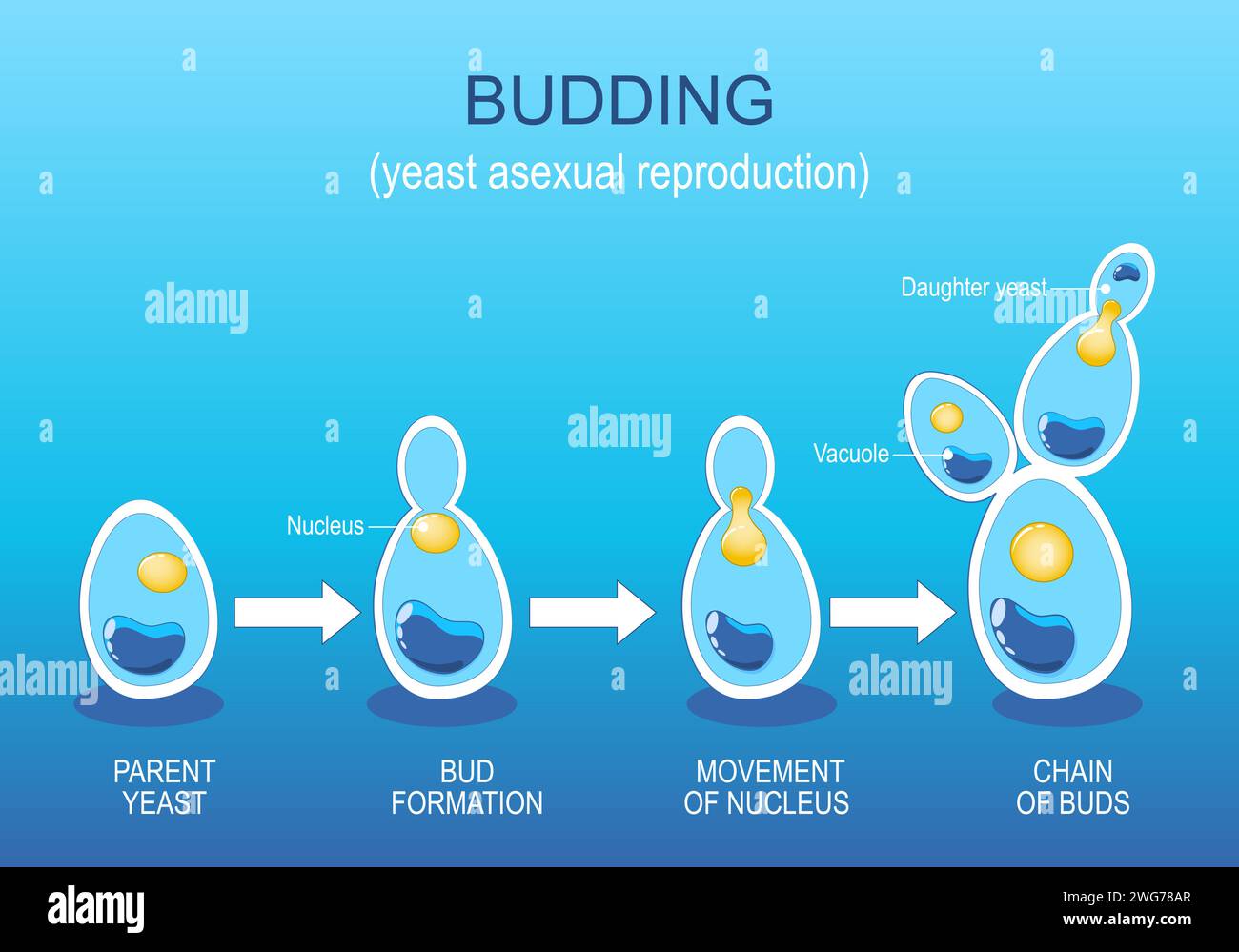 Budding. Yeast Asexual reproduction. Fungi growth. Cell division. Vector diagram. Stock Vectorhttps://www.alamy.com/image-license-details/?v=1https://www.alamy.com/budding-yeast-asexual-reproduction-fungi-growth-cell-division-vector-diagram-image595147247.html
Budding. Yeast Asexual reproduction. Fungi growth. Cell division. Vector diagram. Stock Vectorhttps://www.alamy.com/image-license-details/?v=1https://www.alamy.com/budding-yeast-asexual-reproduction-fungi-growth-cell-division-vector-diagram-image595147247.htmlRF2WG78AR–Budding. Yeast Asexual reproduction. Fungi growth. Cell division. Vector diagram.
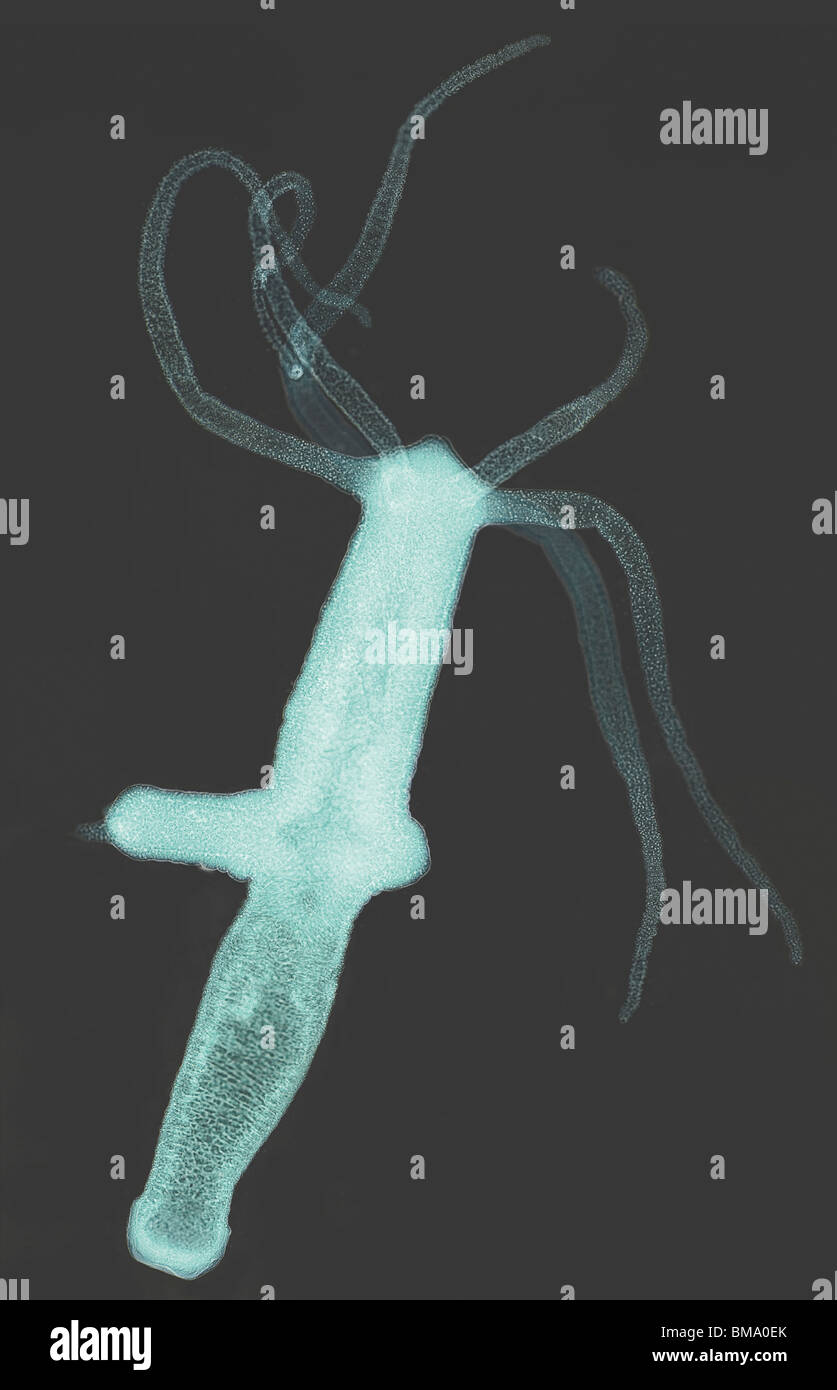 Hydra with bud Stock Photohttps://www.alamy.com/image-license-details/?v=1https://www.alamy.com/stock-photo-hydra-with-bud-29723419.html
Hydra with bud Stock Photohttps://www.alamy.com/image-license-details/?v=1https://www.alamy.com/stock-photo-hydra-with-bud-29723419.htmlRMBMA0EK–Hydra with bud
 Life cycle of jellyfish Stock Photohttps://www.alamy.com/image-license-details/?v=1https://www.alamy.com/life-cycle-of-jellyfish-image431891049.html
Life cycle of jellyfish Stock Photohttps://www.alamy.com/image-license-details/?v=1https://www.alamy.com/life-cycle-of-jellyfish-image431891049.htmlRF2G2J9C9–Life cycle of jellyfish
 Vector isolated illustration of hydra structure on white background. Stock Vectorhttps://www.alamy.com/image-license-details/?v=1https://www.alamy.com/vector-isolated-illustration-of-hydra-structure-on-white-background-image618427700.html
Vector isolated illustration of hydra structure on white background. Stock Vectorhttps://www.alamy.com/image-license-details/?v=1https://www.alamy.com/vector-isolated-illustration-of-hydra-structure-on-white-background-image618427700.htmlRF2XX3PRG–Vector isolated illustration of hydra structure on white background.
 A reference handbook of the medical sciences, embracing the entire range of scientific and practical medicine and allied science . was brought to the attentionof the scientific world by the epoch-making researchesof Trembley (1744) on Hydra. The present articlerefers to the process in animals only. Budding may result in the multiplication of freeindividuals, or in the formation of colonies consistingof individuals more or less intimately connected.When there is complete separation, the bud may befreed (1) in a condition differing little from that ofits parent except in size, as in Hydra, Fig. Stock Photohttps://www.alamy.com/image-license-details/?v=1https://www.alamy.com/a-reference-handbook-of-the-medical-sciences-embracing-the-entire-range-of-scientific-and-practical-medicine-and-allied-science-was-brought-to-the-attentionof-the-scientific-world-by-the-epoch-making-researchesof-trembley-1744-on-hydra-the-present-articlerefers-to-the-process-in-animals-only-budding-may-result-in-the-multiplication-of-freeindividuals-or-in-the-formation-of-colonies-consistingof-individuals-more-or-less-intimately-connectedwhen-there-is-complete-separation-the-bud-may-befreed-1-in-a-condition-differing-little-from-that-ofits-parent-except-in-size-as-in-hydra-fig-image338477711.html
A reference handbook of the medical sciences, embracing the entire range of scientific and practical medicine and allied science . was brought to the attentionof the scientific world by the epoch-making researchesof Trembley (1744) on Hydra. The present articlerefers to the process in animals only. Budding may result in the multiplication of freeindividuals, or in the formation of colonies consistingof individuals more or less intimately connected.When there is complete separation, the bud may befreed (1) in a condition differing little from that ofits parent except in size, as in Hydra, Fig. Stock Photohttps://www.alamy.com/image-license-details/?v=1https://www.alamy.com/a-reference-handbook-of-the-medical-sciences-embracing-the-entire-range-of-scientific-and-practical-medicine-and-allied-science-was-brought-to-the-attentionof-the-scientific-world-by-the-epoch-making-researchesof-trembley-1744-on-hydra-the-present-articlerefers-to-the-process-in-animals-only-budding-may-result-in-the-multiplication-of-freeindividuals-or-in-the-formation-of-colonies-consistingof-individuals-more-or-less-intimately-connectedwhen-there-is-complete-separation-the-bud-may-befreed-1-in-a-condition-differing-little-from-that-ofits-parent-except-in-size-as-in-hydra-fig-image338477711.htmlRM2AJJYNK–A reference handbook of the medical sciences, embracing the entire range of scientific and practical medicine and allied science . was brought to the attentionof the scientific world by the epoch-making researchesof Trembley (1744) on Hydra. The present articlerefers to the process in animals only. Budding may result in the multiplication of freeindividuals, or in the formation of colonies consistingof individuals more or less intimately connected.When there is complete separation, the bud may befreed (1) in a condition differing little from that ofits parent except in size, as in Hydra, Fig.
 . A manual of zoology. THE METAZOA 73 place in a number of different classes of animals. In this form of reproduction a process or bud (Fig. 32, fid) is given off from some part of the parent animal; this bud sooner or later assumes the form of the complete animal, and may become detached from the parent either before or after its M*. Fig. 32. — Fresh-water polype (hydra), two specimens, the one expanded the other contracted, showing multiplication by budding. bdl bd- bd'6, buds in various stages of growth. (From Parker's Biology.) development has been completed, or may remain in perma- nent v Stock Photohttps://www.alamy.com/image-license-details/?v=1https://www.alamy.com/a-manual-of-zoology-the-metazoa-73-place-in-a-number-of-different-classes-of-animals-in-this-form-of-reproduction-a-process-or-bud-fig-32-fid-is-given-off-from-some-part-of-the-parent-animal-this-bud-sooner-or-later-assumes-the-form-of-the-complete-animal-and-may-become-detached-from-the-parent-either-before-or-after-its-m-fig-32-fresh-water-polype-hydra-two-specimens-the-one-expanded-the-other-contracted-showing-multiplication-by-budding-bdl-bd-bd6-buds-in-various-stages-of-growth-from-parkers-biology-development-has-been-completed-or-may-remain-in-perma-nent-v-image216442489.html
. A manual of zoology. THE METAZOA 73 place in a number of different classes of animals. In this form of reproduction a process or bud (Fig. 32, fid) is given off from some part of the parent animal; this bud sooner or later assumes the form of the complete animal, and may become detached from the parent either before or after its M*. Fig. 32. — Fresh-water polype (hydra), two specimens, the one expanded the other contracted, showing multiplication by budding. bdl bd- bd'6, buds in various stages of growth. (From Parker's Biology.) development has been completed, or may remain in perma- nent v Stock Photohttps://www.alamy.com/image-license-details/?v=1https://www.alamy.com/a-manual-of-zoology-the-metazoa-73-place-in-a-number-of-different-classes-of-animals-in-this-form-of-reproduction-a-process-or-bud-fig-32-fid-is-given-off-from-some-part-of-the-parent-animal-this-bud-sooner-or-later-assumes-the-form-of-the-complete-animal-and-may-become-detached-from-the-parent-either-before-or-after-its-m-fig-32-fresh-water-polype-hydra-two-specimens-the-one-expanded-the-other-contracted-showing-multiplication-by-budding-bdl-bd-bd6-buds-in-various-stages-of-growth-from-parkers-biology-development-has-been-completed-or-may-remain-in-perma-nent-v-image216442489.htmlRMPG3PGW–. A manual of zoology. THE METAZOA 73 place in a number of different classes of animals. In this form of reproduction a process or bud (Fig. 32, fid) is given off from some part of the parent animal; this bud sooner or later assumes the form of the complete animal, and may become detached from the parent either before or after its M*. Fig. 32. — Fresh-water polype (hydra), two specimens, the one expanded the other contracted, showing multiplication by budding. bdl bd- bd'6, buds in various stages of growth. (From Parker's Biology.) development has been completed, or may remain in perma- nent v
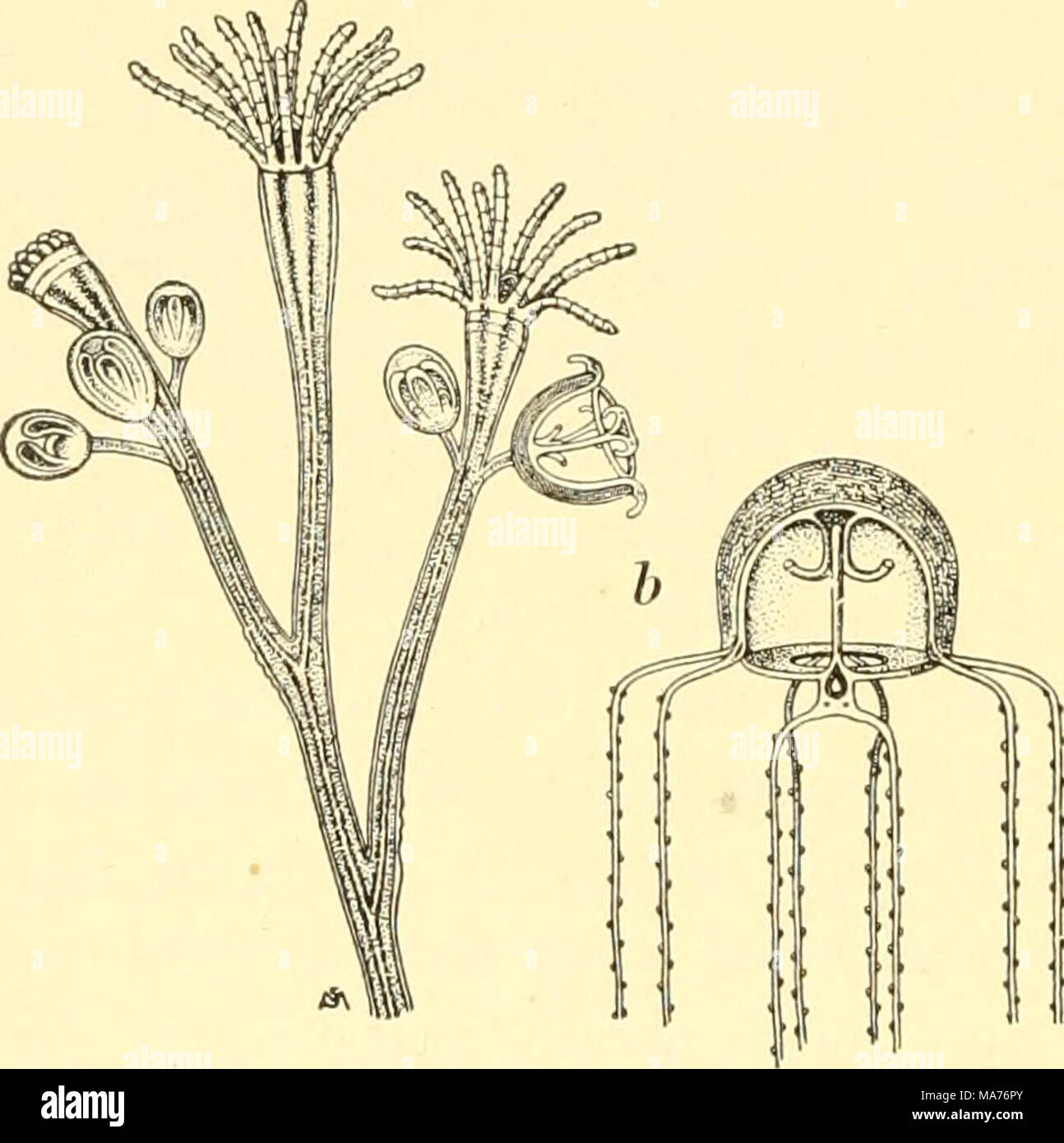 . Elementary biology; an introduction to the science of life . Fig. 155. Hydromedusa {Boiigainvillea 7'ai)iosa) a, enlarged view of portion of colony, showing feeding individuals and reproduction individuals. New individuals are here produced asexually, by budding. /', the medusa stage, which originates as a bud on the hydra colony and reproduces by means of gametes thrown into the water Stock Photohttps://www.alamy.com/image-license-details/?v=1https://www.alamy.com/elementary-biology-an-introduction-to-the-science-of-life-fig-155-hydromedusa-boiigainvillea-7aiiosa-a-enlarged-view-of-portion-of-colony-showing-feeding-individuals-and-reproduction-individuals-new-individuals-are-here-produced-asexually-by-budding-the-medusa-stage-which-originates-as-a-bud-on-the-hydra-colony-and-reproduces-by-means-of-gametes-thrown-into-the-water-image178409251.html
. Elementary biology; an introduction to the science of life . Fig. 155. Hydromedusa {Boiigainvillea 7'ai)iosa) a, enlarged view of portion of colony, showing feeding individuals and reproduction individuals. New individuals are here produced asexually, by budding. /', the medusa stage, which originates as a bud on the hydra colony and reproduces by means of gametes thrown into the water Stock Photohttps://www.alamy.com/image-license-details/?v=1https://www.alamy.com/elementary-biology-an-introduction-to-the-science-of-life-fig-155-hydromedusa-boiigainvillea-7aiiosa-a-enlarged-view-of-portion-of-colony-showing-feeding-individuals-and-reproduction-individuals-new-individuals-are-here-produced-asexually-by-budding-the-medusa-stage-which-originates-as-a-bud-on-the-hydra-colony-and-reproduces-by-means-of-gametes-thrown-into-the-water-image178409251.htmlRMMA76PY–. Elementary biology; an introduction to the science of life . Fig. 155. Hydromedusa {Boiigainvillea 7'ai)iosa) a, enlarged view of portion of colony, showing feeding individuals and reproduction individuals. New individuals are here produced asexually, by budding. /', the medusa stage, which originates as a bud on the hydra colony and reproduces by means of gametes thrown into the water
 Green Hydra (Chlorohydra viridissima) adult, in process of asexual reproduction by budding off new animal, attached to piece of Stock Photohttps://www.alamy.com/image-license-details/?v=1https://www.alamy.com/stock-photo-green-hydra-chlorohydra-viridissima-adult-in-process-of-asexual-reproduction-49036880.html
Green Hydra (Chlorohydra viridissima) adult, in process of asexual reproduction by budding off new animal, attached to piece of Stock Photohttps://www.alamy.com/image-license-details/?v=1https://www.alamy.com/stock-photo-green-hydra-chlorohydra-viridissima-adult-in-process-of-asexual-reproduction-49036880.htmlRMCRNR14–Green Hydra (Chlorohydra viridissima) adult, in process of asexual reproduction by budding off new animal, attached to piece of
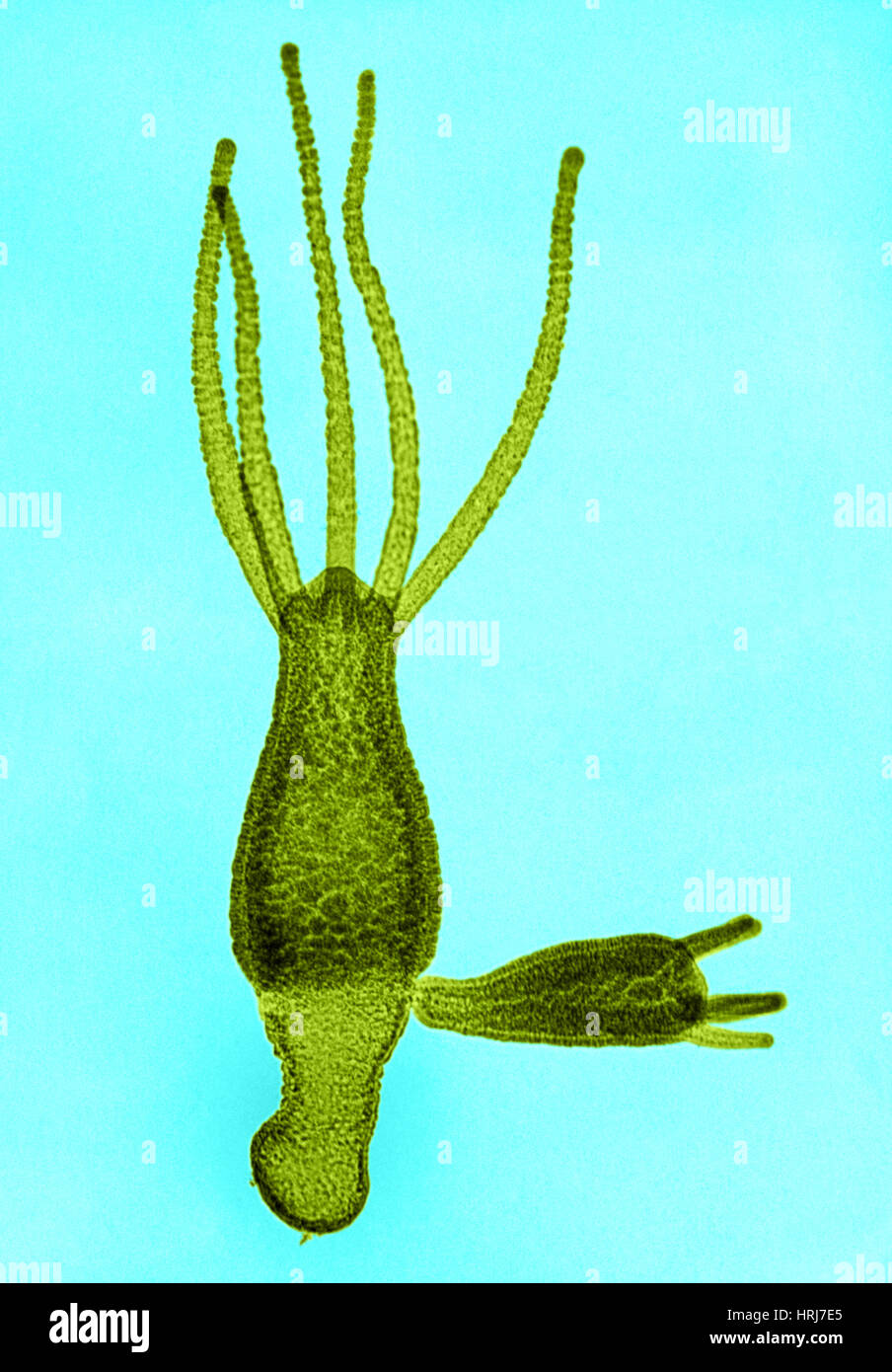 Hydra, LM Stock Photohttps://www.alamy.com/image-license-details/?v=1https://www.alamy.com/stock-photo-hydra-lm-135010685.html
Hydra, LM Stock Photohttps://www.alamy.com/image-license-details/?v=1https://www.alamy.com/stock-photo-hydra-lm-135010685.htmlRMHRJ7E5–Hydra, LM
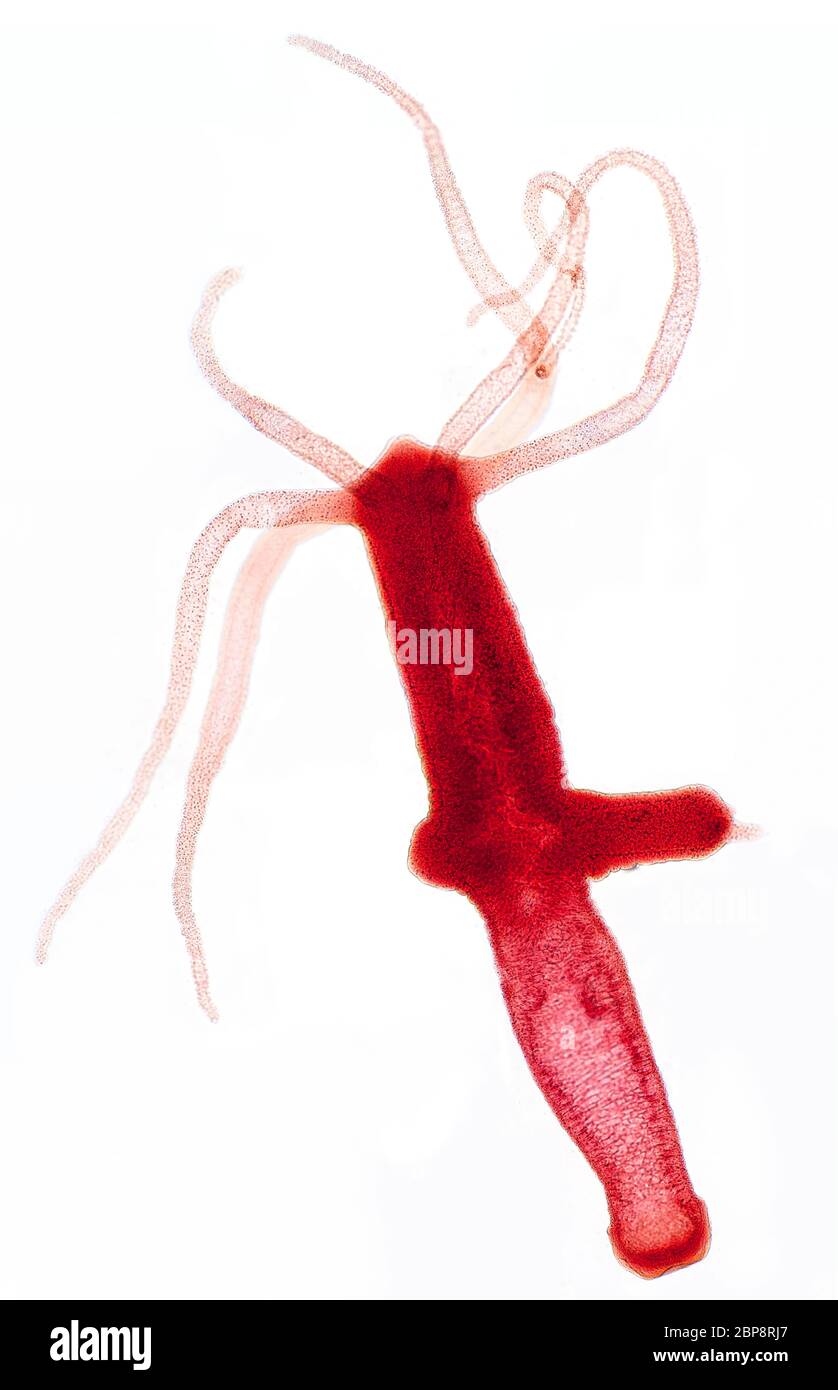 Light photomicrograph of Hydra with bud Stock Photohttps://www.alamy.com/image-license-details/?v=1https://www.alamy.com/light-photomicrograph-of-hydra-with-bud-image357923951.html
Light photomicrograph of Hydra with bud Stock Photohttps://www.alamy.com/image-license-details/?v=1https://www.alamy.com/light-photomicrograph-of-hydra-with-bud-image357923951.htmlRM2BP8RJ7–Light photomicrograph of Hydra with bud
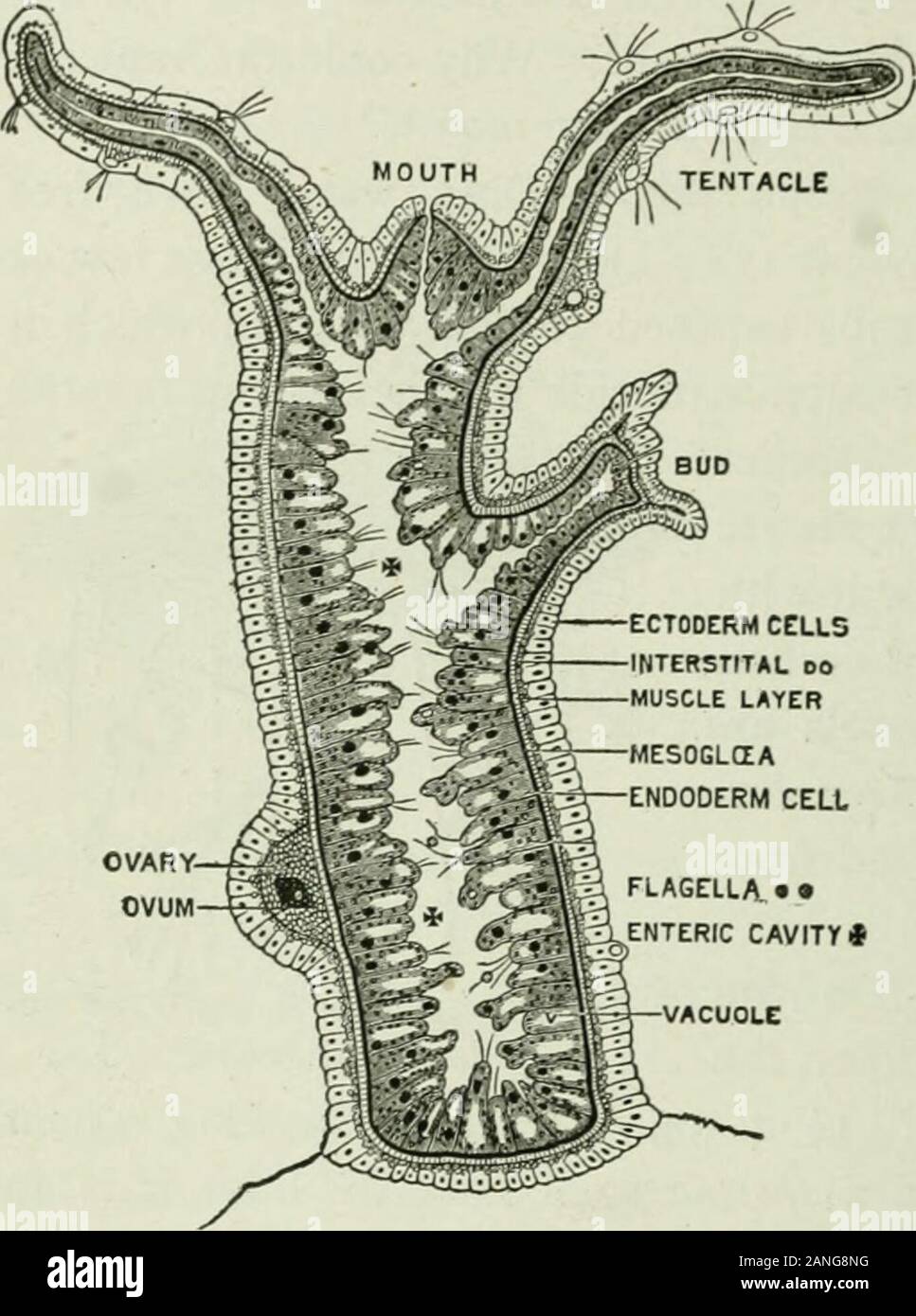 Beginners' zoology . Fig. 38. — Hydras on the under sur-face of pondweed. 26 BEGINNERS ZOOLOGY scarce. Asexual generation (by budding) is common withthe hydra when food supply is abundant. After the bud grows to a cer-tain size, theouter layer ofcells at the baseof the bud con-stricts and theyoung hydra isdetached. Compare thesponge and thehydra in the fol-lowing respects:— many celled,or one celled;obtaining food ;breathing; tubesand cavities;openings; re-production ; loco-motion. Whichranks higher. ECTODERM CELLSINTERSTITAL 00MUSCLE LAYER FLAGELLA • •ENTERIC CAVITY* Fig. 39. ? • Longitudinal Stock Photohttps://www.alamy.com/image-license-details/?v=1https://www.alamy.com/beginners-zoology-fig-38-hydras-on-the-under-sur-face-of-pondweed-26-beginners-zoology-scarce-asexual-generation-by-budding-is-common-withthe-hydra-when-food-supply-is-abundant-after-the-bud-grows-to-a-cer-tain-size-theouter-layer-ofcells-at-the-baseof-the-bud-con-stricts-and-theyoung-hydra-isdetached-compare-thesponge-and-thehydra-in-the-fol-lowing-respects-many-celledor-one-celledobtaining-food-breathing-tubesand-cavitiesopenings-re-production-loco-motion-whichranks-higher-ectoderm-cellsinterstital-00muscle-layer-flagella-enteric-cavity-fig-39-longitudinal-image340262876.html
Beginners' zoology . Fig. 38. — Hydras on the under sur-face of pondweed. 26 BEGINNERS ZOOLOGY scarce. Asexual generation (by budding) is common withthe hydra when food supply is abundant. After the bud grows to a cer-tain size, theouter layer ofcells at the baseof the bud con-stricts and theyoung hydra isdetached. Compare thesponge and thehydra in the fol-lowing respects:— many celled,or one celled;obtaining food ;breathing; tubesand cavities;openings; re-production ; loco-motion. Whichranks higher. ECTODERM CELLSINTERSTITAL 00MUSCLE LAYER FLAGELLA • •ENTERIC CAVITY* Fig. 39. ? • Longitudinal Stock Photohttps://www.alamy.com/image-license-details/?v=1https://www.alamy.com/beginners-zoology-fig-38-hydras-on-the-under-sur-face-of-pondweed-26-beginners-zoology-scarce-asexual-generation-by-budding-is-common-withthe-hydra-when-food-supply-is-abundant-after-the-bud-grows-to-a-cer-tain-size-theouter-layer-ofcells-at-the-baseof-the-bud-con-stricts-and-theyoung-hydra-isdetached-compare-thesponge-and-thehydra-in-the-fol-lowing-respects-many-celledor-one-celledobtaining-food-breathing-tubesand-cavitiesopenings-re-production-loco-motion-whichranks-higher-ectoderm-cellsinterstital-00muscle-layer-flagella-enteric-cavity-fig-39-longitudinal-image340262876.htmlRM2ANG8NG–Beginners' zoology . Fig. 38. — Hydras on the under sur-face of pondweed. 26 BEGINNERS ZOOLOGY scarce. Asexual generation (by budding) is common withthe hydra when food supply is abundant. After the bud grows to a cer-tain size, theouter layer ofcells at the baseof the bud con-stricts and theyoung hydra isdetached. Compare thesponge and thehydra in the fol-lowing respects:— many celled,or one celled;obtaining food ;breathing; tubesand cavities;openings; re-production ; loco-motion. Whichranks higher. ECTODERM CELLSINTERSTITAL 00MUSCLE LAYER FLAGELLA • •ENTERIC CAVITY* Fig. 39. ? • Longitudinal
 . Zoology : for students and general readers . Zoology. 54 ZOOLOGY. The process of budding is but a modification of tliat in- volved in natural self-division, and it is carried on to a great extent in Hydra, a mucli larger number of individuals being produced in this way than from eggs. Our figure (3G) shows two individuals budding out from the parent Hydra ; the smaller bud («) is a simple bulging out of the body-walls, the bud enveloping a por- tion of the stomach, until it becomes con- stricted and drops off, the tentacles mean- while budding out from the distal end, and a mouth-opening ari Stock Photohttps://www.alamy.com/image-license-details/?v=1https://www.alamy.com/zoology-for-students-and-general-readers-zoology-54-zoology-the-process-of-budding-is-but-a-modification-of-tliat-in-volved-in-natural-self-division-and-it-is-carried-on-to-a-great-extent-in-hydra-a-mucli-larger-number-of-individuals-being-produced-in-this-way-than-from-eggs-our-figure-3g-shows-two-individuals-budding-out-from-the-parent-hydra-the-smaller-bud-is-a-simple-bulging-out-of-the-body-walls-the-bud-enveloping-a-por-tion-of-the-stomach-until-it-becomes-con-stricted-and-drops-off-the-tentacles-mean-while-budding-out-from-the-distal-end-and-a-mouth-opening-ari-image216404709.html
. Zoology : for students and general readers . Zoology. 54 ZOOLOGY. The process of budding is but a modification of tliat in- volved in natural self-division, and it is carried on to a great extent in Hydra, a mucli larger number of individuals being produced in this way than from eggs. Our figure (3G) shows two individuals budding out from the parent Hydra ; the smaller bud («) is a simple bulging out of the body-walls, the bud enveloping a por- tion of the stomach, until it becomes con- stricted and drops off, the tentacles mean- while budding out from the distal end, and a mouth-opening ari Stock Photohttps://www.alamy.com/image-license-details/?v=1https://www.alamy.com/zoology-for-students-and-general-readers-zoology-54-zoology-the-process-of-budding-is-but-a-modification-of-tliat-in-volved-in-natural-self-division-and-it-is-carried-on-to-a-great-extent-in-hydra-a-mucli-larger-number-of-individuals-being-produced-in-this-way-than-from-eggs-our-figure-3g-shows-two-individuals-budding-out-from-the-parent-hydra-the-smaller-bud-is-a-simple-bulging-out-of-the-body-walls-the-bud-enveloping-a-por-tion-of-the-stomach-until-it-becomes-con-stricted-and-drops-off-the-tentacles-mean-while-budding-out-from-the-distal-end-and-a-mouth-opening-ari-image216404709.htmlRMPG22BH–. Zoology : for students and general readers . Zoology. 54 ZOOLOGY. The process of budding is but a modification of tliat in- volved in natural self-division, and it is carried on to a great extent in Hydra, a mucli larger number of individuals being produced in this way than from eggs. Our figure (3G) shows two individuals budding out from the parent Hydra ; the smaller bud («) is a simple bulging out of the body-walls, the bud enveloping a por- tion of the stomach, until it becomes con- stricted and drops off, the tentacles mean- while budding out from the distal end, and a mouth-opening ari
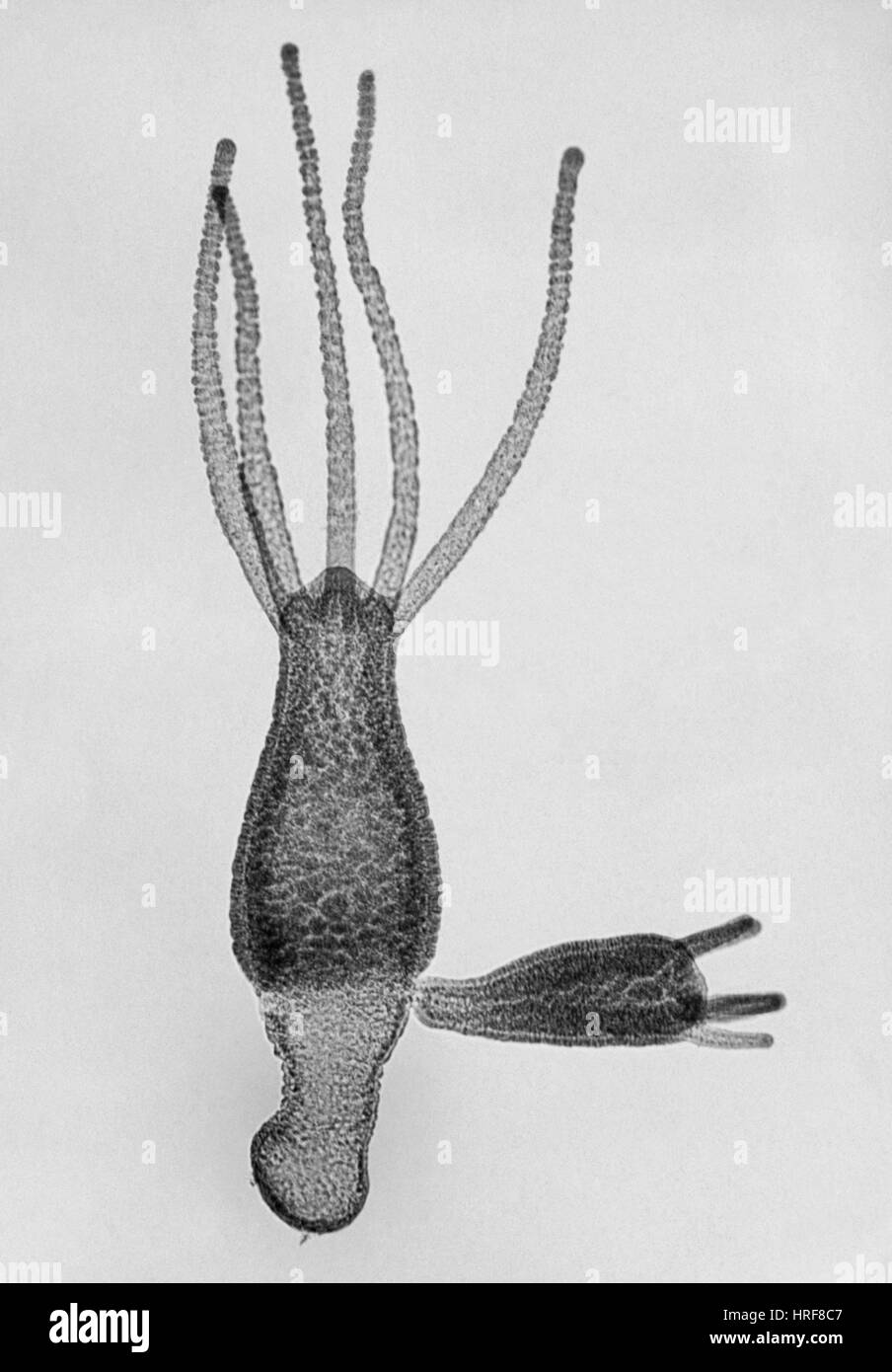 Hydra, LM Stock Photohttps://www.alamy.com/image-license-details/?v=1https://www.alamy.com/stock-photo-hydra-lm-134945559.html
Hydra, LM Stock Photohttps://www.alamy.com/image-license-details/?v=1https://www.alamy.com/stock-photo-hydra-lm-134945559.htmlRMHRF8C7–Hydra, LM
 First lesson in zoology : adapted for use in schools . ts former stomach-lining having now become its skin.The Hydra reproduces by budding as well as by eggs. The process of budding is but a modification of that in-volved in natural self-division, and it is carried on to agreat extent in Hydra, a much larger number of individualsbeing produced in this way than from eggs. Our figure(^1) shows two individuals budding out from the parent 28 FIRST LESSONS IN ZOOLOGY. Hydra; the smaller bud (q) is a simple bulging out of thebody-wallsj the bud enTeloping a portion of the stomach,until it becomes co Stock Photohttps://www.alamy.com/image-license-details/?v=1https://www.alamy.com/first-lesson-in-zoology-adapted-for-use-in-schools-ts-former-stomach-lining-having-now-become-its-skinthe-hydra-reproduces-by-budding-as-well-as-by-eggs-the-process-of-budding-is-but-a-modification-of-that-in-volved-in-natural-self-division-and-it-is-carried-on-to-agreat-extent-in-hydra-a-much-larger-number-of-individualsbeing-produced-in-this-way-than-from-eggs-our-figure1-shows-two-individuals-budding-out-from-the-parent-28-first-lessons-in-zoology-hydra-the-smaller-bud-q-is-a-simple-bulging-out-of-thebody-wallsj-the-bud-enteloping-a-portion-of-the-stomachuntil-it-becomes-co-image339273013.html
First lesson in zoology : adapted for use in schools . ts former stomach-lining having now become its skin.The Hydra reproduces by budding as well as by eggs. The process of budding is but a modification of that in-volved in natural self-division, and it is carried on to agreat extent in Hydra, a much larger number of individualsbeing produced in this way than from eggs. Our figure(^1) shows two individuals budding out from the parent 28 FIRST LESSONS IN ZOOLOGY. Hydra; the smaller bud (q) is a simple bulging out of thebody-wallsj the bud enTeloping a portion of the stomach,until it becomes co Stock Photohttps://www.alamy.com/image-license-details/?v=1https://www.alamy.com/first-lesson-in-zoology-adapted-for-use-in-schools-ts-former-stomach-lining-having-now-become-its-skinthe-hydra-reproduces-by-budding-as-well-as-by-eggs-the-process-of-budding-is-but-a-modification-of-that-in-volved-in-natural-self-division-and-it-is-carried-on-to-agreat-extent-in-hydra-a-much-larger-number-of-individualsbeing-produced-in-this-way-than-from-eggs-our-figure1-shows-two-individuals-budding-out-from-the-parent-28-first-lessons-in-zoology-hydra-the-smaller-bud-q-is-a-simple-bulging-out-of-thebody-wallsj-the-bud-enteloping-a-portion-of-the-stomachuntil-it-becomes-co-image339273013.htmlRM2AKY659–First lesson in zoology : adapted for use in schools . ts former stomach-lining having now become its skin.The Hydra reproduces by budding as well as by eggs. The process of budding is but a modification of that in-volved in natural self-division, and it is carried on to agreat extent in Hydra, a much larger number of individualsbeing produced in this way than from eggs. Our figure(^1) shows two individuals budding out from the parent 28 FIRST LESSONS IN ZOOLOGY. Hydra; the smaller bud (q) is a simple bulging out of thebody-wallsj the bud enTeloping a portion of the stomach,until it becomes co
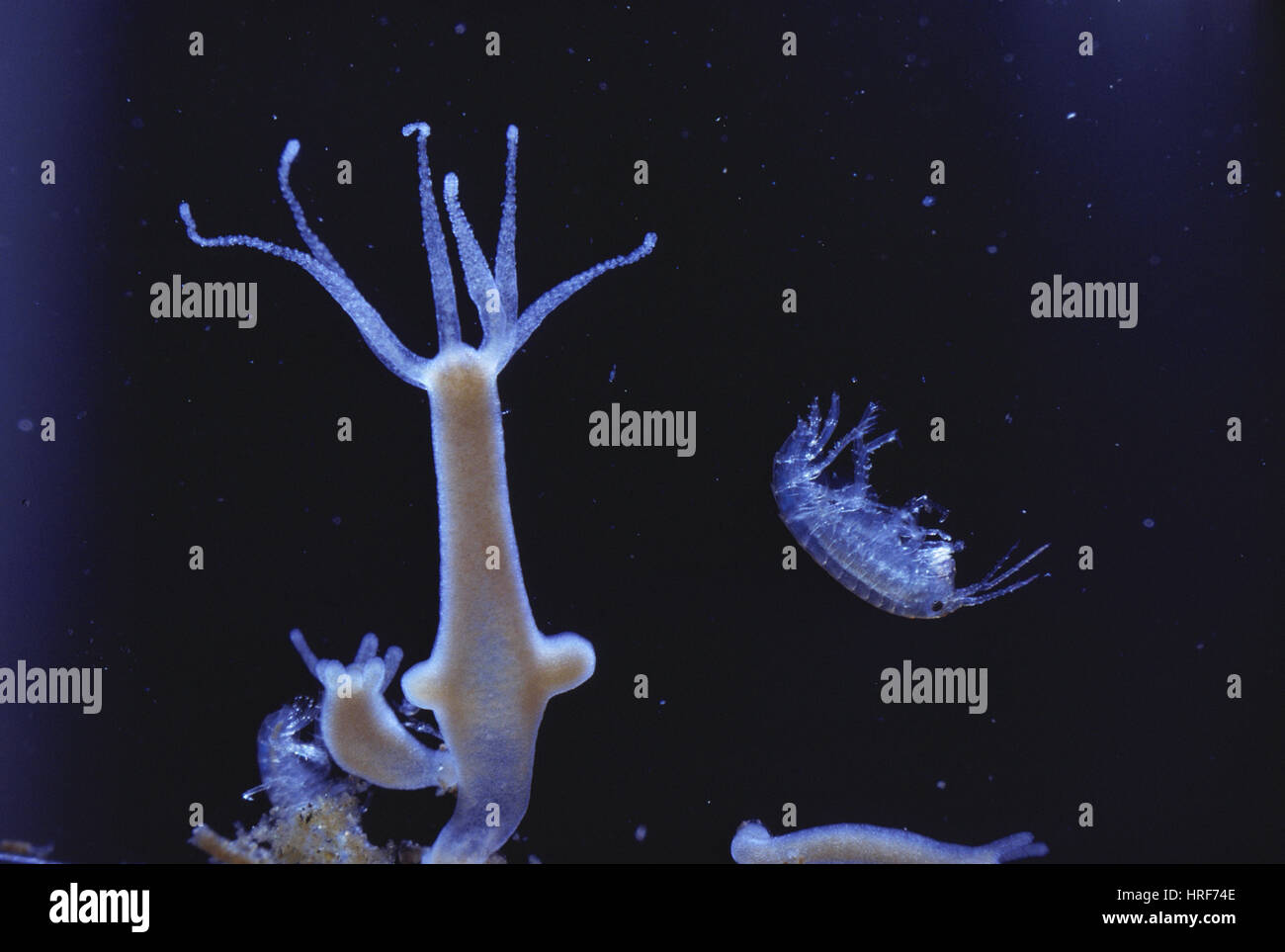 Brown Hydra with Buds (LM) Stock Photohttps://www.alamy.com/image-license-details/?v=1https://www.alamy.com/stock-photo-brown-hydra-with-buds-lm-134944558.html
Brown Hydra with Buds (LM) Stock Photohttps://www.alamy.com/image-license-details/?v=1https://www.alamy.com/stock-photo-brown-hydra-with-buds-lm-134944558.htmlRMHRF74E–Brown Hydra with Buds (LM)
 . The biology of hydra and of some other coelenterates, 1961. Hydra; Cnidaria; Ctenophora; Cnidaria; Hydra. 328 THE BIOLOGY OF HYDRA : 1961 The animals represented by the filled chcles were fed every third day. These animals demonstrate that the rate of hydranth bud- ding is not significantly decreased by the lowered nutritional level but that frustule production is differentially affected. Therefore, this experiment provides direct evidence of a physiological interac- tion between medusa budding and frustule budding and further indicates that this interaction is at least partially nutritional Stock Photohttps://www.alamy.com/image-license-details/?v=1https://www.alamy.com/the-biology-of-hydra-and-of-some-other-coelenterates-1961-hydra-cnidaria-ctenophora-cnidaria-hydra-328-the-biology-of-hydra-1961-the-animals-represented-by-the-filled-chcles-were-fed-every-third-day-these-animals-demonstrate-that-the-rate-of-hydranth-bud-ding-is-not-significantly-decreased-by-the-lowered-nutritional-level-but-that-frustule-production-is-differentially-affected-therefore-this-experiment-provides-direct-evidence-of-a-physiological-interac-tion-between-medusa-budding-and-frustule-budding-and-further-indicates-that-this-interaction-is-at-least-partially-nutritional-image234604649.html
. The biology of hydra and of some other coelenterates, 1961. Hydra; Cnidaria; Ctenophora; Cnidaria; Hydra. 328 THE BIOLOGY OF HYDRA : 1961 The animals represented by the filled chcles were fed every third day. These animals demonstrate that the rate of hydranth bud- ding is not significantly decreased by the lowered nutritional level but that frustule production is differentially affected. Therefore, this experiment provides direct evidence of a physiological interac- tion between medusa budding and frustule budding and further indicates that this interaction is at least partially nutritional Stock Photohttps://www.alamy.com/image-license-details/?v=1https://www.alamy.com/the-biology-of-hydra-and-of-some-other-coelenterates-1961-hydra-cnidaria-ctenophora-cnidaria-hydra-328-the-biology-of-hydra-1961-the-animals-represented-by-the-filled-chcles-were-fed-every-third-day-these-animals-demonstrate-that-the-rate-of-hydranth-bud-ding-is-not-significantly-decreased-by-the-lowered-nutritional-level-but-that-frustule-production-is-differentially-affected-therefore-this-experiment-provides-direct-evidence-of-a-physiological-interac-tion-between-medusa-budding-and-frustule-budding-and-further-indicates-that-this-interaction-is-at-least-partially-nutritional-image234604649.htmlRMRHK4HD–. The biology of hydra and of some other coelenterates, 1961. Hydra; Cnidaria; Ctenophora; Cnidaria; Hydra. 328 THE BIOLOGY OF HYDRA : 1961 The animals represented by the filled chcles were fed every third day. These animals demonstrate that the rate of hydranth bud- ding is not significantly decreased by the lowered nutritional level but that frustule production is differentially affected. Therefore, this experiment provides direct evidence of a physiological interac- tion between medusa budding and frustule budding and further indicates that this interaction is at least partially nutritional
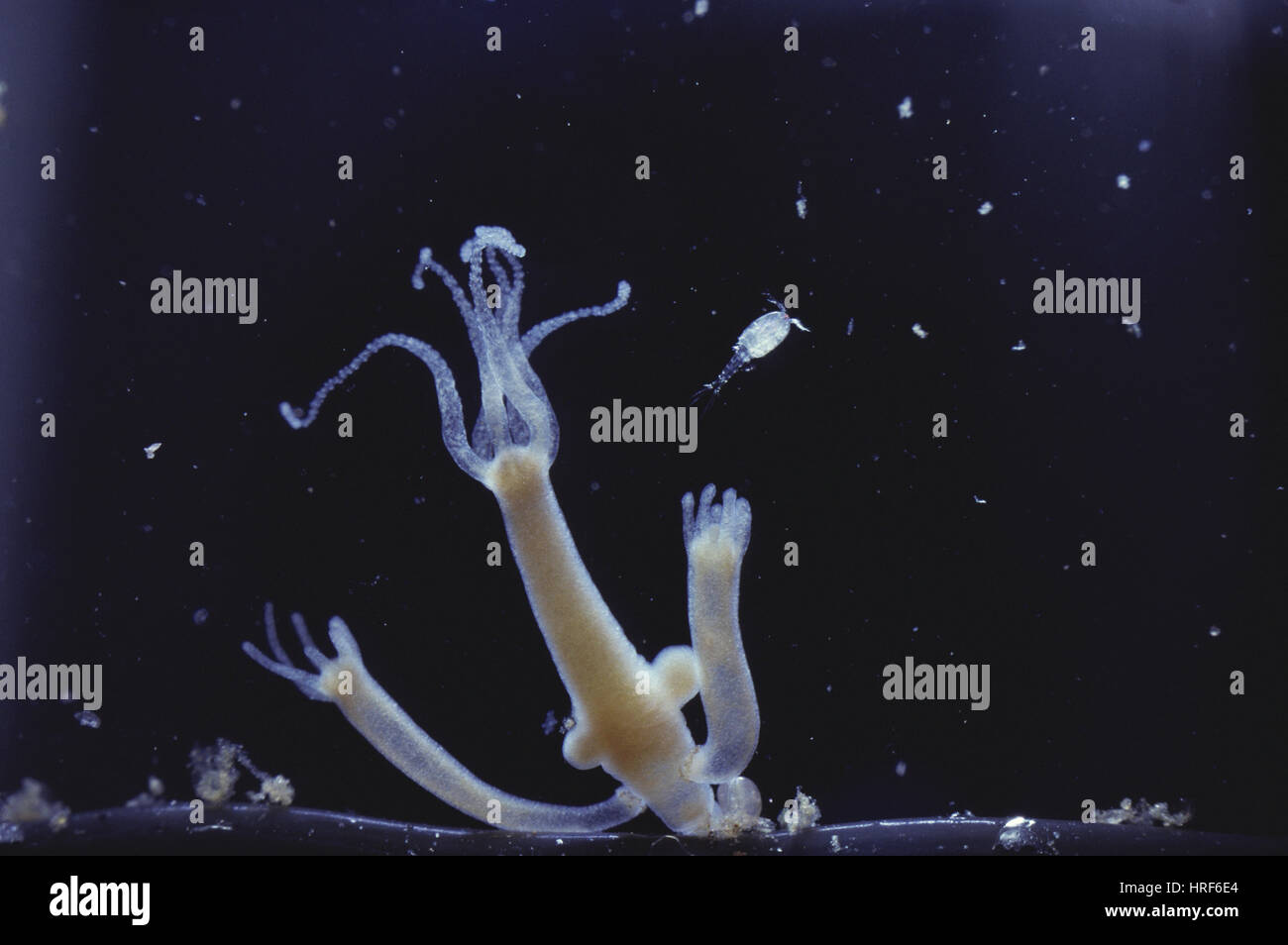 Brown Hydra with Buds (LM) Stock Photohttps://www.alamy.com/image-license-details/?v=1https://www.alamy.com/stock-photo-brown-hydra-with-buds-lm-134944044.html
Brown Hydra with Buds (LM) Stock Photohttps://www.alamy.com/image-license-details/?v=1https://www.alamy.com/stock-photo-brown-hydra-with-buds-lm-134944044.htmlRMHRF6E4–Brown Hydra with Buds (LM)
 . Beginners zoology. Zoology. 26 BEGINNERS' ZOOLOGY ECTODERM CELLS INTERSTITAL 00 MUSCLE LAYER OVARY- OVUM scarce. Asexual generation (by budding) is common with the hydra when food supply is abundant. After the bud grows to a cer- tain size, the outer layer of cells at the base of the bud con- stricts and the young hydra is detached. Compare the sponge and the hydra in the fol- lowing respects: — many celled, or one celled; obtaining food ; breathing; tubes and cavities; openings; re- production ; loco- motion. Which ranks higher among the metazoa ? The metazoa, or many celled ani- mals, incl Stock Photohttps://www.alamy.com/image-license-details/?v=1https://www.alamy.com/beginners-zoology-zoology-26-beginners-zoology-ectoderm-cells-interstital-00-muscle-layer-ovary-ovum-scarce-asexual-generation-by-budding-is-common-with-the-hydra-when-food-supply-is-abundant-after-the-bud-grows-to-a-cer-tain-size-the-outer-layer-of-cells-at-the-base-of-the-bud-con-stricts-and-the-young-hydra-is-detached-compare-the-sponge-and-the-hydra-in-the-fol-lowing-respects-many-celled-or-one-celled-obtaining-food-breathing-tubes-and-cavities-openings-re-production-loco-motion-which-ranks-higher-among-the-metazoa-the-metazoa-or-many-celled-ani-mals-incl-image234793571.html
. Beginners zoology. Zoology. 26 BEGINNERS' ZOOLOGY ECTODERM CELLS INTERSTITAL 00 MUSCLE LAYER OVARY- OVUM scarce. Asexual generation (by budding) is common with the hydra when food supply is abundant. After the bud grows to a cer- tain size, the outer layer of cells at the base of the bud con- stricts and the young hydra is detached. Compare the sponge and the hydra in the fol- lowing respects: — many celled, or one celled; obtaining food ; breathing; tubes and cavities; openings; re- production ; loco- motion. Which ranks higher among the metazoa ? The metazoa, or many celled ani- mals, incl Stock Photohttps://www.alamy.com/image-license-details/?v=1https://www.alamy.com/beginners-zoology-zoology-26-beginners-zoology-ectoderm-cells-interstital-00-muscle-layer-ovary-ovum-scarce-asexual-generation-by-budding-is-common-with-the-hydra-when-food-supply-is-abundant-after-the-bud-grows-to-a-cer-tain-size-the-outer-layer-of-cells-at-the-base-of-the-bud-con-stricts-and-the-young-hydra-is-detached-compare-the-sponge-and-the-hydra-in-the-fol-lowing-respects-many-celled-or-one-celled-obtaining-food-breathing-tubes-and-cavities-openings-re-production-loco-motion-which-ranks-higher-among-the-metazoa-the-metazoa-or-many-celled-ani-mals-incl-image234793571.htmlRMRHYNGK–. Beginners zoology. Zoology. 26 BEGINNERS' ZOOLOGY ECTODERM CELLS INTERSTITAL 00 MUSCLE LAYER OVARY- OVUM scarce. Asexual generation (by budding) is common with the hydra when food supply is abundant. After the bud grows to a cer- tain size, the outer layer of cells at the base of the bud con- stricts and the young hydra is detached. Compare the sponge and the hydra in the fol- lowing respects: — many celled, or one celled; obtaining food ; breathing; tubes and cavities; openings; re- production ; loco- motion. Which ranks higher among the metazoa ? The metazoa, or many celled ani- mals, incl
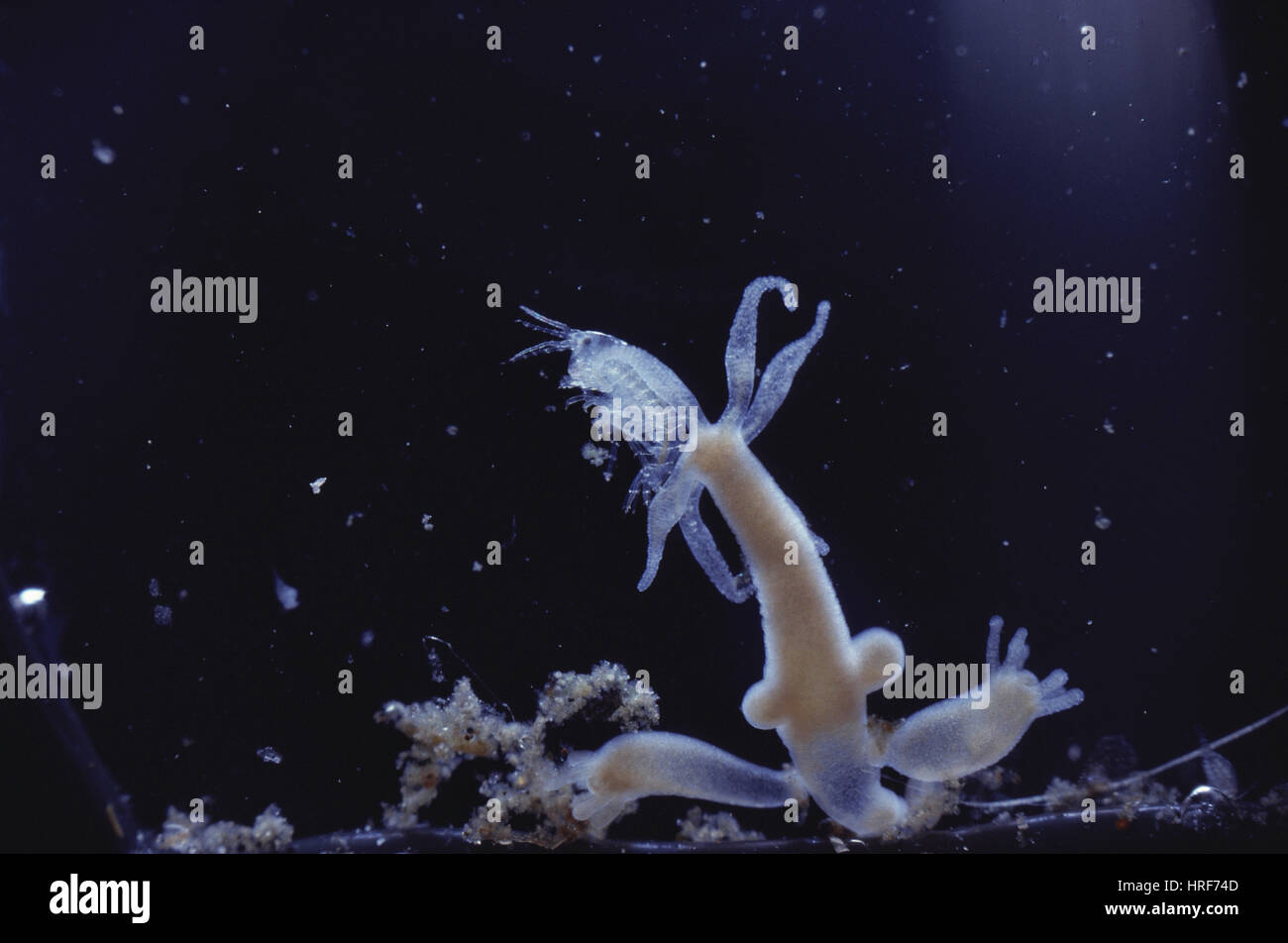 Brown Hydra Feeding (LM) Stock Photohttps://www.alamy.com/image-license-details/?v=1https://www.alamy.com/stock-photo-brown-hydra-feeding-lm-134944557.html
Brown Hydra Feeding (LM) Stock Photohttps://www.alamy.com/image-license-details/?v=1https://www.alamy.com/stock-photo-brown-hydra-feeding-lm-134944557.htmlRMHRF74D–Brown Hydra Feeding (LM)
 . The biology of hydra and of some other coelenterates, 1961. Hydra; Cnidaria; Ctenophora; Cnidaria; Hydra. 322 THE BIOLOGY OF HYDRA : 1961 A similar sequence of events was also observed in colonies reared at 20° and at 19-23 : At 20° {± 1°) (Fig. 5) the frequency of all three types of budding was reduced though the same basic bud- ding pattern was observed: an obvious initial peak of hydranth production, a phase of rapid frustule production followed by a slight decline, and a phase of medusa budding. At 19-23' (Fig. 6) all three types of budding were increased and the three phases of asexual Stock Photohttps://www.alamy.com/image-license-details/?v=1https://www.alamy.com/the-biology-of-hydra-and-of-some-other-coelenterates-1961-hydra-cnidaria-ctenophora-cnidaria-hydra-322-the-biology-of-hydra-1961-a-similar-sequence-of-events-was-also-observed-in-colonies-reared-at-20-and-at-19-23-at-20-1-fig-5-the-frequency-of-all-three-types-of-budding-was-reduced-though-the-same-basic-bud-ding-pattern-was-observed-an-obvious-initial-peak-of-hydranth-production-a-phase-of-rapid-frustule-production-followed-by-a-slight-decline-and-a-phase-of-medusa-budding-at-19-23-fig-6-all-three-types-of-budding-were-increased-and-the-three-phases-of-asexual-image234604697.html
. The biology of hydra and of some other coelenterates, 1961. Hydra; Cnidaria; Ctenophora; Cnidaria; Hydra. 322 THE BIOLOGY OF HYDRA : 1961 A similar sequence of events was also observed in colonies reared at 20° and at 19-23 : At 20° {± 1°) (Fig. 5) the frequency of all three types of budding was reduced though the same basic bud- ding pattern was observed: an obvious initial peak of hydranth production, a phase of rapid frustule production followed by a slight decline, and a phase of medusa budding. At 19-23' (Fig. 6) all three types of budding were increased and the three phases of asexual Stock Photohttps://www.alamy.com/image-license-details/?v=1https://www.alamy.com/the-biology-of-hydra-and-of-some-other-coelenterates-1961-hydra-cnidaria-ctenophora-cnidaria-hydra-322-the-biology-of-hydra-1961-a-similar-sequence-of-events-was-also-observed-in-colonies-reared-at-20-and-at-19-23-at-20-1-fig-5-the-frequency-of-all-three-types-of-budding-was-reduced-though-the-same-basic-bud-ding-pattern-was-observed-an-obvious-initial-peak-of-hydranth-production-a-phase-of-rapid-frustule-production-followed-by-a-slight-decline-and-a-phase-of-medusa-budding-at-19-23-fig-6-all-three-types-of-budding-were-increased-and-the-three-phases-of-asexual-image234604697.htmlRMRHK4K5–. The biology of hydra and of some other coelenterates, 1961. Hydra; Cnidaria; Ctenophora; Cnidaria; Hydra. 322 THE BIOLOGY OF HYDRA : 1961 A similar sequence of events was also observed in colonies reared at 20° and at 19-23 : At 20° {± 1°) (Fig. 5) the frequency of all three types of budding was reduced though the same basic bud- ding pattern was observed: an obvious initial peak of hydranth production, a phase of rapid frustule production followed by a slight decline, and a phase of medusa budding. At 19-23' (Fig. 6) all three types of budding were increased and the three phases of asexual
 . The Biological bulletin. Biology; Zoology; Biology; Marine Biology. EFFECT OF TEMPERATURE ON ANIMAL TISSUES. 45 temperature of 4°C. a fusion of the partially divided halves takes place. Among Hydra the formation of buds, which finally become distinct individuals, may be considered analogous to the process of cell division among Protozoa. It was found that if a Hydra in the earlier stages of the process of budding be placed. FIG. 2. The same Hydra as in Fig. I, after an exposure of six days to a tem- perature of 6°C. The absorption of the tentacles and bud is nearly complete. at a temperature Stock Photohttps://www.alamy.com/image-license-details/?v=1https://www.alamy.com/the-biological-bulletin-biology-zoology-biology-marine-biology-effect-of-temperature-on-animal-tissues-45-temperature-of-4c-a-fusion-of-the-partially-divided-halves-takes-place-among-hydra-the-formation-of-buds-which-finally-become-distinct-individuals-may-be-considered-analogous-to-the-process-of-cell-division-among-protozoa-it-was-found-that-if-a-hydra-in-the-earlier-stages-of-the-process-of-budding-be-placed-fig-2-the-same-hydra-as-in-fig-i-after-an-exposure-of-six-days-to-a-tem-perature-of-6c-the-absorption-of-the-tentacles-and-bud-is-nearly-complete-at-a-temperature-image234698262.html
. The Biological bulletin. Biology; Zoology; Biology; Marine Biology. EFFECT OF TEMPERATURE ON ANIMAL TISSUES. 45 temperature of 4°C. a fusion of the partially divided halves takes place. Among Hydra the formation of buds, which finally become distinct individuals, may be considered analogous to the process of cell division among Protozoa. It was found that if a Hydra in the earlier stages of the process of budding be placed. FIG. 2. The same Hydra as in Fig. I, after an exposure of six days to a tem- perature of 6°C. The absorption of the tentacles and bud is nearly complete. at a temperature Stock Photohttps://www.alamy.com/image-license-details/?v=1https://www.alamy.com/the-biological-bulletin-biology-zoology-biology-marine-biology-effect-of-temperature-on-animal-tissues-45-temperature-of-4c-a-fusion-of-the-partially-divided-halves-takes-place-among-hydra-the-formation-of-buds-which-finally-become-distinct-individuals-may-be-considered-analogous-to-the-process-of-cell-division-among-protozoa-it-was-found-that-if-a-hydra-in-the-earlier-stages-of-the-process-of-budding-be-placed-fig-2-the-same-hydra-as-in-fig-i-after-an-exposure-of-six-days-to-a-tem-perature-of-6c-the-absorption-of-the-tentacles-and-bud-is-nearly-complete-at-a-temperature-image234698262.htmlRMRHRC0P–. The Biological bulletin. Biology; Zoology; Biology; Marine Biology. EFFECT OF TEMPERATURE ON ANIMAL TISSUES. 45 temperature of 4°C. a fusion of the partially divided halves takes place. Among Hydra the formation of buds, which finally become distinct individuals, may be considered analogous to the process of cell division among Protozoa. It was found that if a Hydra in the earlier stages of the process of budding be placed. FIG. 2. The same Hydra as in Fig. I, after an exposure of six days to a tem- perature of 6°C. The absorption of the tentacles and bud is nearly complete. at a temperature
![. Elementary text-book of zoology [electronic resource]. Zoology. OBELIA. 119 justified, as it first arises as a single polype individual which buds like Hydra, but in this case the bud does not become detacherl. It remains in continuity with the parent and later buds in its turn. Obetm is therefore a hydroid (or hydra-like) colony produced by asexual budding. The perisarc is secreted by the outer layer or ectoderm and is evidently a necessity to a colonial form to give support. Occasionally, at the base of the colony, there may be noticed large ovoid masses completely enveloped in perisarc. T Stock Photo . Elementary text-book of zoology [electronic resource]. Zoology. OBELIA. 119 justified, as it first arises as a single polype individual which buds like Hydra, but in this case the bud does not become detacherl. It remains in continuity with the parent and later buds in its turn. Obetm is therefore a hydroid (or hydra-like) colony produced by asexual budding. The perisarc is secreted by the outer layer or ectoderm and is evidently a necessity to a colonial form to give support. Occasionally, at the base of the colony, there may be noticed large ovoid masses completely enveloped in perisarc. T Stock Photo](https://c8.alamy.com/comp/RJNDRH/elementary-text-book-of-zoology-electronic-resource-zoology-obelia-119-justified-as-it-first-arises-as-a-single-polype-individual-which-buds-like-hydra-but-in-this-case-the-bud-does-not-become-detacherl-it-remains-in-continuity-with-the-parent-and-later-buds-in-its-turn-obetm-is-therefore-a-hydroid-or-hydra-like-colony-produced-by-asexual-budding-the-perisarc-is-secreted-by-the-outer-layer-or-ectoderm-and-is-evidently-a-necessity-to-a-colonial-form-to-give-support-occasionally-at-the-base-of-the-colony-there-may-be-noticed-large-ovoid-masses-completely-enveloped-in-perisarc-t-RJNDRH.jpg) . Elementary text-book of zoology [electronic resource]. Zoology. OBELIA. 119 justified, as it first arises as a single polype individual which buds like Hydra, but in this case the bud does not become detacherl. It remains in continuity with the parent and later buds in its turn. Obetm is therefore a hydroid (or hydra-like) colony produced by asexual budding. The perisarc is secreted by the outer layer or ectoderm and is evidently a necessity to a colonial form to give support. Occasionally, at the base of the colony, there may be noticed large ovoid masses completely enveloped in perisarc. T Stock Photohttps://www.alamy.com/image-license-details/?v=1https://www.alamy.com/elementary-text-book-of-zoology-electronic-resource-zoology-obelia-119-justified-as-it-first-arises-as-a-single-polype-individual-which-buds-like-hydra-but-in-this-case-the-bud-does-not-become-detacherl-it-remains-in-continuity-with-the-parent-and-later-buds-in-its-turn-obetm-is-therefore-a-hydroid-or-hydra-like-colony-produced-by-asexual-budding-the-perisarc-is-secreted-by-the-outer-layer-or-ectoderm-and-is-evidently-a-necessity-to-a-colonial-form-to-give-support-occasionally-at-the-base-of-the-colony-there-may-be-noticed-large-ovoid-masses-completely-enveloped-in-perisarc-t-image235270437.html
. Elementary text-book of zoology [electronic resource]. Zoology. OBELIA. 119 justified, as it first arises as a single polype individual which buds like Hydra, but in this case the bud does not become detacherl. It remains in continuity with the parent and later buds in its turn. Obetm is therefore a hydroid (or hydra-like) colony produced by asexual budding. The perisarc is secreted by the outer layer or ectoderm and is evidently a necessity to a colonial form to give support. Occasionally, at the base of the colony, there may be noticed large ovoid masses completely enveloped in perisarc. T Stock Photohttps://www.alamy.com/image-license-details/?v=1https://www.alamy.com/elementary-text-book-of-zoology-electronic-resource-zoology-obelia-119-justified-as-it-first-arises-as-a-single-polype-individual-which-buds-like-hydra-but-in-this-case-the-bud-does-not-become-detacherl-it-remains-in-continuity-with-the-parent-and-later-buds-in-its-turn-obetm-is-therefore-a-hydroid-or-hydra-like-colony-produced-by-asexual-budding-the-perisarc-is-secreted-by-the-outer-layer-or-ectoderm-and-is-evidently-a-necessity-to-a-colonial-form-to-give-support-occasionally-at-the-base-of-the-colony-there-may-be-noticed-large-ovoid-masses-completely-enveloped-in-perisarc-t-image235270437.htmlRMRJNDRH–. Elementary text-book of zoology [electronic resource]. Zoology. OBELIA. 119 justified, as it first arises as a single polype individual which buds like Hydra, but in this case the bud does not become detacherl. It remains in continuity with the parent and later buds in its turn. Obetm is therefore a hydroid (or hydra-like) colony produced by asexual budding. The perisarc is secreted by the outer layer or ectoderm and is evidently a necessity to a colonial form to give support. Occasionally, at the base of the colony, there may be noticed large ovoid masses completely enveloped in perisarc. T
 . Elementary text-book of zoology. OBELI A. 119 justified, as it first arises as a single polype imlividual which buds like Hydra, but in this case the bud does not become detached. It remains in continuity with the parent and later buds in its turn. Obelia is therefore a hydroid (or hydra-like) colony produced by asexual budding. The perisarc is secreted by the outer layer or ectoderm and is evidently a necessity to a colonial form to give support. Occasionally, at the base of the colony, there may be noticed large ovoid masses completely enveloped in perisarc. These sporosacs contain modifi Stock Photohttps://www.alamy.com/image-license-details/?v=1https://www.alamy.com/elementary-text-book-of-zoology-obeli-a-119-justified-as-it-first-arises-as-a-single-polype-imlividual-which-buds-like-hydra-but-in-this-case-the-bud-does-not-become-detached-it-remains-in-continuity-with-the-parent-and-later-buds-in-its-turn-obelia-is-therefore-a-hydroid-or-hydra-like-colony-produced-by-asexual-budding-the-perisarc-is-secreted-by-the-outer-layer-or-ectoderm-and-is-evidently-a-necessity-to-a-colonial-form-to-give-support-occasionally-at-the-base-of-the-colony-there-may-be-noticed-large-ovoid-masses-completely-enveloped-in-perisarc-these-sporosacs-contain-modifi-image232114302.html
. Elementary text-book of zoology. OBELI A. 119 justified, as it first arises as a single polype imlividual which buds like Hydra, but in this case the bud does not become detached. It remains in continuity with the parent and later buds in its turn. Obelia is therefore a hydroid (or hydra-like) colony produced by asexual budding. The perisarc is secreted by the outer layer or ectoderm and is evidently a necessity to a colonial form to give support. Occasionally, at the base of the colony, there may be noticed large ovoid masses completely enveloped in perisarc. These sporosacs contain modifi Stock Photohttps://www.alamy.com/image-license-details/?v=1https://www.alamy.com/elementary-text-book-of-zoology-obeli-a-119-justified-as-it-first-arises-as-a-single-polype-imlividual-which-buds-like-hydra-but-in-this-case-the-bud-does-not-become-detached-it-remains-in-continuity-with-the-parent-and-later-buds-in-its-turn-obelia-is-therefore-a-hydroid-or-hydra-like-colony-produced-by-asexual-budding-the-perisarc-is-secreted-by-the-outer-layer-or-ectoderm-and-is-evidently-a-necessity-to-a-colonial-form-to-give-support-occasionally-at-the-base-of-the-colony-there-may-be-noticed-large-ovoid-masses-completely-enveloped-in-perisarc-these-sporosacs-contain-modifi-image232114302.htmlRMRDHM4E–. Elementary text-book of zoology. OBELI A. 119 justified, as it first arises as a single polype imlividual which buds like Hydra, but in this case the bud does not become detached. It remains in continuity with the parent and later buds in its turn. Obelia is therefore a hydroid (or hydra-like) colony produced by asexual budding. The perisarc is secreted by the outer layer or ectoderm and is evidently a necessity to a colonial form to give support. Occasionally, at the base of the colony, there may be noticed large ovoid masses completely enveloped in perisarc. These sporosacs contain modifi
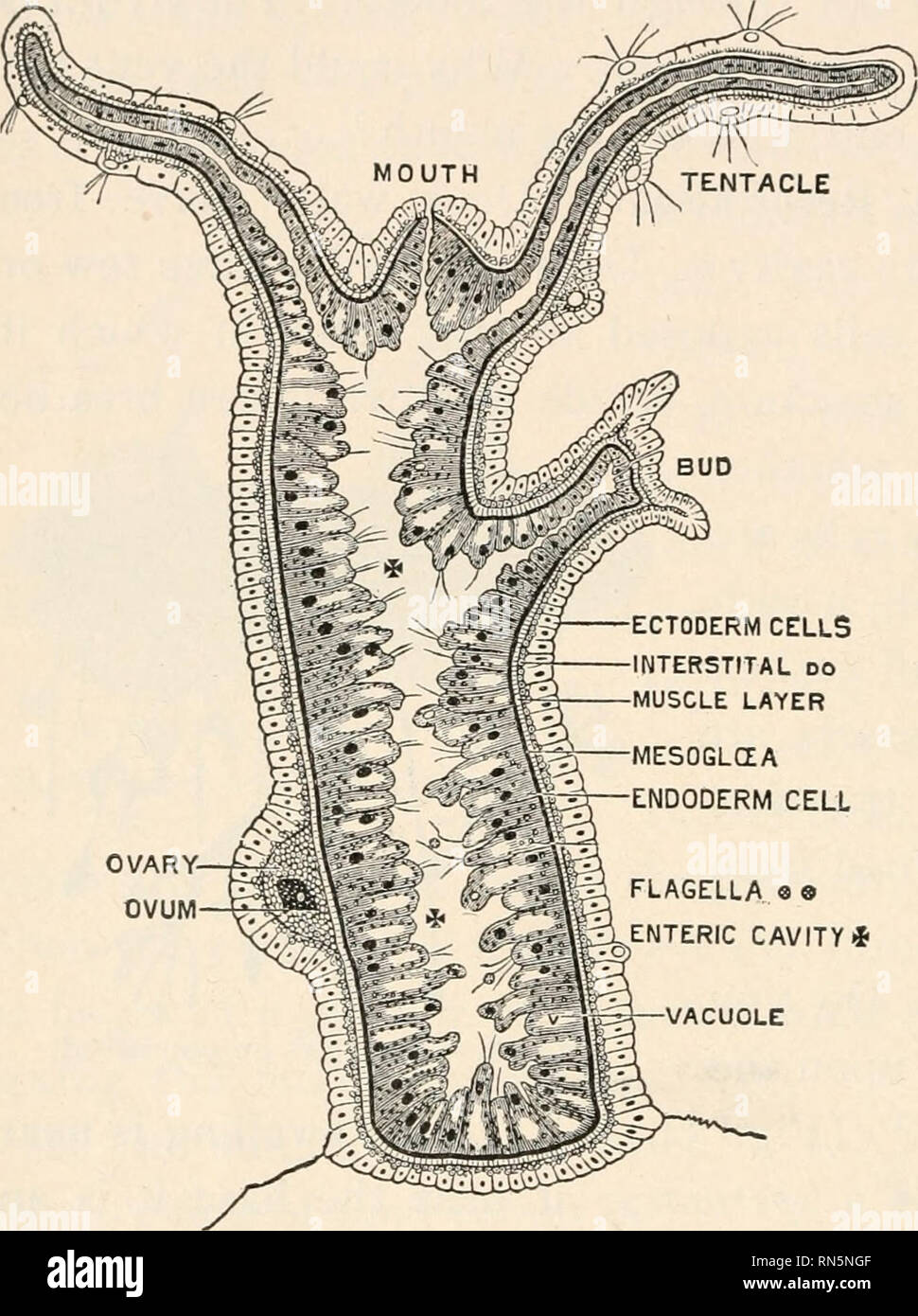 . Animal biology; Human biology. Parts II & III of First course in biology. Biology. 26 ANIMAL BIOLOGY scarce. Asexual generation (by budding) is common with the hydra when food supply is abundant. After the bud grows to a cer- tain size, the outer layer of cells at the base of the bud con- stricts and the young hydra is detached. Compare the sponge and the hydra in the fol- lowing respects: - many celled, or one celled; obtaining food ; breathing; tubes and cavities; openings; re- production ; loco- motion. Which ranks higher ECTODERM CELLS INTERSTITAL DO MUSCLE LAYER MESOGLCEA ENDODERM C Stock Photohttps://www.alamy.com/image-license-details/?v=1https://www.alamy.com/animal-biology-human-biology-parts-ii-amp-iii-of-first-course-in-biology-biology-26-animal-biology-scarce-asexual-generation-by-budding-is-common-with-the-hydra-when-food-supply-is-abundant-after-the-bud-grows-to-a-cer-tain-size-the-outer-layer-of-cells-at-the-base-of-the-bud-con-stricts-and-the-young-hydra-is-detached-compare-the-sponge-and-the-hydra-in-the-fol-lowing-respects-many-celled-or-one-celled-obtaining-food-breathing-tubes-and-cavities-openings-re-production-loco-motion-which-ranks-higher-ectoderm-cells-interstital-do-muscle-layer-mesoglcea-endoderm-c-image236769247.html
. Animal biology; Human biology. Parts II & III of First course in biology. Biology. 26 ANIMAL BIOLOGY scarce. Asexual generation (by budding) is common with the hydra when food supply is abundant. After the bud grows to a cer- tain size, the outer layer of cells at the base of the bud con- stricts and the young hydra is detached. Compare the sponge and the hydra in the fol- lowing respects: - many celled, or one celled; obtaining food ; breathing; tubes and cavities; openings; re- production ; loco- motion. Which ranks higher ECTODERM CELLS INTERSTITAL DO MUSCLE LAYER MESOGLCEA ENDODERM C Stock Photohttps://www.alamy.com/image-license-details/?v=1https://www.alamy.com/animal-biology-human-biology-parts-ii-amp-iii-of-first-course-in-biology-biology-26-animal-biology-scarce-asexual-generation-by-budding-is-common-with-the-hydra-when-food-supply-is-abundant-after-the-bud-grows-to-a-cer-tain-size-the-outer-layer-of-cells-at-the-base-of-the-bud-con-stricts-and-the-young-hydra-is-detached-compare-the-sponge-and-the-hydra-in-the-fol-lowing-respects-many-celled-or-one-celled-obtaining-food-breathing-tubes-and-cavities-openings-re-production-loco-motion-which-ranks-higher-ectoderm-cells-interstital-do-muscle-layer-mesoglcea-endoderm-c-image236769247.htmlRMRN5NGF–. Animal biology; Human biology. Parts II & III of First course in biology. Biology. 26 ANIMAL BIOLOGY scarce. Asexual generation (by budding) is common with the hydra when food supply is abundant. After the bud grows to a cer- tain size, the outer layer of cells at the base of the bud con- stricts and the young hydra is detached. Compare the sponge and the hydra in the fol- lowing respects: - many celled, or one celled; obtaining food ; breathing; tubes and cavities; openings; re- production ; loco- motion. Which ranks higher ECTODERM CELLS INTERSTITAL DO MUSCLE LAYER MESOGLCEA ENDODERM C
 . The Biological bulletin. Biology; Zoology; Biology; Marine Biology. About 2 - 3 days B. Separation of Secondary Axis. About 3 - 6 weeks Figure 5. Difference between budding (A) and separation of a secondary axis of polarity (B) in hydra. The secondary axis of polarity can be established by the induction method of Browne described in the text, or by a kind of longitudinal fission, which can occur naturally or be initiated by cutting the upper half a hydra partway down the middle of the body column. this bud starts to form, it will normally develop a basal disc at the point of junction between Stock Photohttps://www.alamy.com/image-license-details/?v=1https://www.alamy.com/the-biological-bulletin-biology-zoology-biology-marine-biology-about-2-3-days-b-separation-of-secondary-axis-about-3-6-weeks-figure-5-difference-between-budding-a-and-separation-of-a-secondary-axis-of-polarity-b-in-hydra-the-secondary-axis-of-polarity-can-be-established-by-the-induction-method-of-browne-described-in-the-text-or-by-a-kind-of-longitudinal-fission-which-can-occur-naturally-or-be-initiated-by-cutting-the-upper-half-a-hydra-partway-down-the-middle-of-the-body-column-this-bud-starts-to-form-it-will-normally-develop-a-basal-disc-at-the-point-of-junction-between-image234646173.html
. The Biological bulletin. Biology; Zoology; Biology; Marine Biology. About 2 - 3 days B. Separation of Secondary Axis. About 3 - 6 weeks Figure 5. Difference between budding (A) and separation of a secondary axis of polarity (B) in hydra. The secondary axis of polarity can be established by the induction method of Browne described in the text, or by a kind of longitudinal fission, which can occur naturally or be initiated by cutting the upper half a hydra partway down the middle of the body column. this bud starts to form, it will normally develop a basal disc at the point of junction between Stock Photohttps://www.alamy.com/image-license-details/?v=1https://www.alamy.com/the-biological-bulletin-biology-zoology-biology-marine-biology-about-2-3-days-b-separation-of-secondary-axis-about-3-6-weeks-figure-5-difference-between-budding-a-and-separation-of-a-secondary-axis-of-polarity-b-in-hydra-the-secondary-axis-of-polarity-can-be-established-by-the-induction-method-of-browne-described-in-the-text-or-by-a-kind-of-longitudinal-fission-which-can-occur-naturally-or-be-initiated-by-cutting-the-upper-half-a-hydra-partway-down-the-middle-of-the-body-column-this-bud-starts-to-form-it-will-normally-develop-a-basal-disc-at-the-point-of-junction-between-image234646173.htmlRMRHN1GD–. The Biological bulletin. Biology; Zoology; Biology; Marine Biology. About 2 - 3 days B. Separation of Secondary Axis. About 3 - 6 weeks Figure 5. Difference between budding (A) and separation of a secondary axis of polarity (B) in hydra. The secondary axis of polarity can be established by the induction method of Browne described in the text, or by a kind of longitudinal fission, which can occur naturally or be initiated by cutting the upper half a hydra partway down the middle of the body column. this bud starts to form, it will normally develop a basal disc at the point of junction between
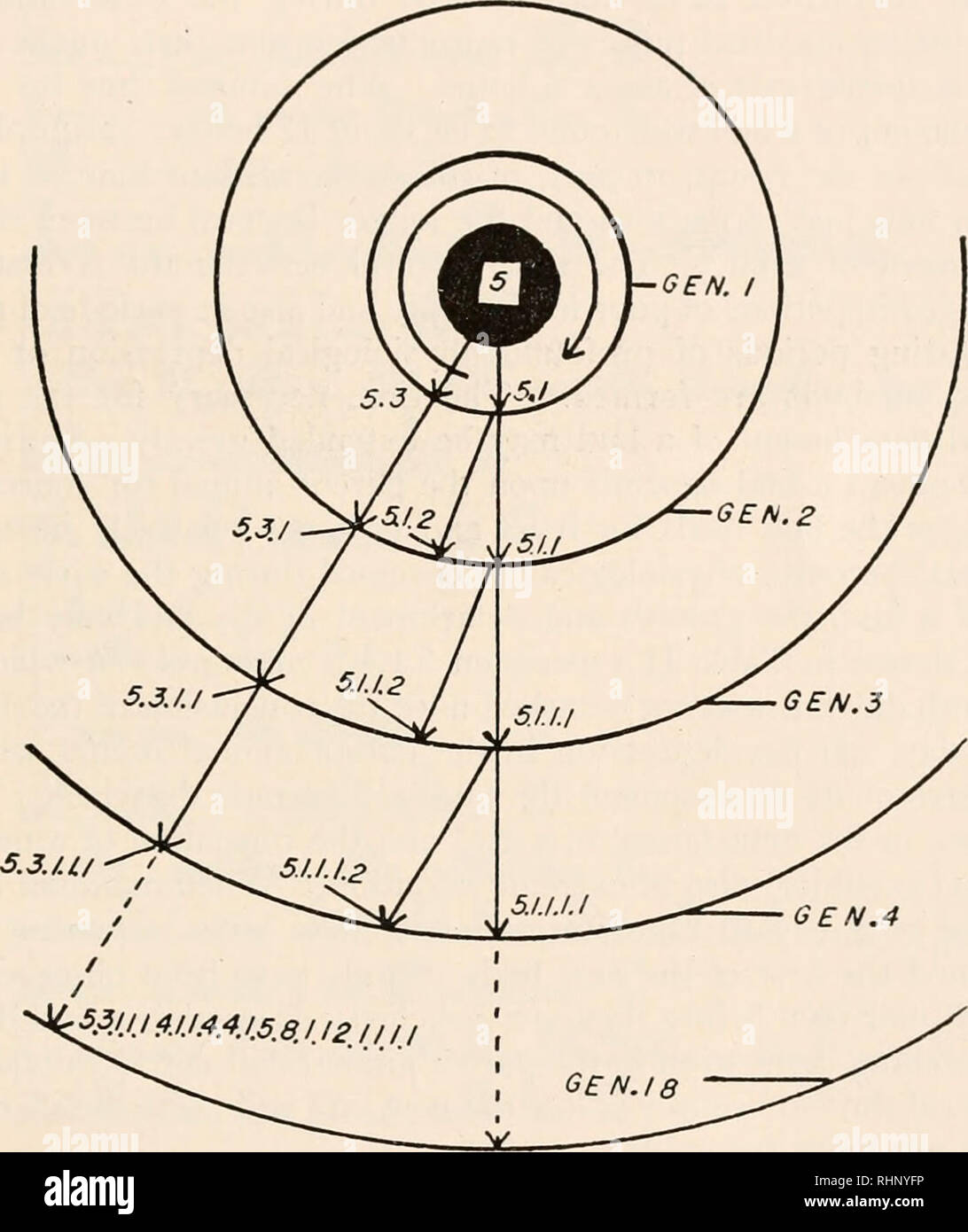 . The Biological bulletin. Biology; Zoology; Biology; Marine Biology. REPRODUCTIVE POTENTIAL IN A HYDRA CLONE 289 occurred within 2 days and by the end of the eighth day some of the specimens in the culture were bearing one bud, some were single and a few were bearing 2 buds. Specimens bearing 4, 5 and 6 buds appeared rapidly during the next 2 days but on the last day of the 17 day period there was an increase in the number of single specimens which were not budding. Increase in numbers was very high from the tenth to the fourteenth day but the rate of increase declined slightly from the four- Stock Photohttps://www.alamy.com/image-license-details/?v=1https://www.alamy.com/the-biological-bulletin-biology-zoology-biology-marine-biology-reproductive-potential-in-a-hydra-clone-289-occurred-within-2-days-and-by-the-end-of-the-eighth-day-some-of-the-specimens-in-the-culture-were-bearing-one-bud-some-were-single-and-a-few-were-bearing-2-buds-specimens-bearing-4-5-and-6-buds-appeared-rapidly-during-the-next-2-days-but-on-the-last-day-of-the-17-day-period-there-was-an-increase-in-the-number-of-single-specimens-which-were-not-budding-increase-in-numbers-was-very-high-from-the-tenth-to-the-fourteenth-day-but-the-rate-of-increase-declined-slightly-from-the-four-image234666538.html
. The Biological bulletin. Biology; Zoology; Biology; Marine Biology. REPRODUCTIVE POTENTIAL IN A HYDRA CLONE 289 occurred within 2 days and by the end of the eighth day some of the specimens in the culture were bearing one bud, some were single and a few were bearing 2 buds. Specimens bearing 4, 5 and 6 buds appeared rapidly during the next 2 days but on the last day of the 17 day period there was an increase in the number of single specimens which were not budding. Increase in numbers was very high from the tenth to the fourteenth day but the rate of increase declined slightly from the four- Stock Photohttps://www.alamy.com/image-license-details/?v=1https://www.alamy.com/the-biological-bulletin-biology-zoology-biology-marine-biology-reproductive-potential-in-a-hydra-clone-289-occurred-within-2-days-and-by-the-end-of-the-eighth-day-some-of-the-specimens-in-the-culture-were-bearing-one-bud-some-were-single-and-a-few-were-bearing-2-buds-specimens-bearing-4-5-and-6-buds-appeared-rapidly-during-the-next-2-days-but-on-the-last-day-of-the-17-day-period-there-was-an-increase-in-the-number-of-single-specimens-which-were-not-budding-increase-in-numbers-was-very-high-from-the-tenth-to-the-fourteenth-day-but-the-rate-of-increase-declined-slightly-from-the-four-image234666538.htmlRMRHNYFP–. The Biological bulletin. Biology; Zoology; Biology; Marine Biology. REPRODUCTIVE POTENTIAL IN A HYDRA CLONE 289 occurred within 2 days and by the end of the eighth day some of the specimens in the culture were bearing one bud, some were single and a few were bearing 2 buds. Specimens bearing 4, 5 and 6 buds appeared rapidly during the next 2 days but on the last day of the 17 day period there was an increase in the number of single specimens which were not budding. Increase in numbers was very high from the tenth to the fourteenth day but the rate of increase declined slightly from the four-
 . Animal biology; Human biology. Parts II & III of First course in biology. Biology. FIG. 43- - A JELLYFISH. ance changes entirely and instead of being hydra-like, it becomes the large and complex creature called jellyfish (Fig. 43). But the egg of tJie jellyfish pro- duces a small hydra- like ani- mal 'which gives rise by budding to a hydroid) and the cycle is complete. The bud (or reproductive hydranth) of the hydroid FIG. 44. — A JELLYFISH (medusa).. Please note that these images are extracted from scanned page images that may have been digitally enhanced for readability - coloration an Stock Photohttps://www.alamy.com/image-license-details/?v=1https://www.alamy.com/animal-biology-human-biology-parts-ii-amp-iii-of-first-course-in-biology-biology-fig-43-a-jellyfish-ance-changes-entirely-and-instead-of-being-hydra-like-it-becomes-the-large-and-complex-creature-called-jellyfish-fig-43-but-the-egg-of-tjie-jellyfish-pro-duces-a-small-hydra-like-ani-mal-which-gives-rise-by-budding-to-a-hydroid-and-the-cycle-is-complete-the-bud-or-reproductive-hydranth-of-the-hydroid-fig-44-a-jellyfish-medusa-please-note-that-these-images-are-extracted-from-scanned-page-images-that-may-have-been-digitally-enhanced-for-readability-coloration-an-image236769132.html
. Animal biology; Human biology. Parts II & III of First course in biology. Biology. FIG. 43- - A JELLYFISH. ance changes entirely and instead of being hydra-like, it becomes the large and complex creature called jellyfish (Fig. 43). But the egg of tJie jellyfish pro- duces a small hydra- like ani- mal 'which gives rise by budding to a hydroid) and the cycle is complete. The bud (or reproductive hydranth) of the hydroid FIG. 44. — A JELLYFISH (medusa).. Please note that these images are extracted from scanned page images that may have been digitally enhanced for readability - coloration an Stock Photohttps://www.alamy.com/image-license-details/?v=1https://www.alamy.com/animal-biology-human-biology-parts-ii-amp-iii-of-first-course-in-biology-biology-fig-43-a-jellyfish-ance-changes-entirely-and-instead-of-being-hydra-like-it-becomes-the-large-and-complex-creature-called-jellyfish-fig-43-but-the-egg-of-tjie-jellyfish-pro-duces-a-small-hydra-like-ani-mal-which-gives-rise-by-budding-to-a-hydroid-and-the-cycle-is-complete-the-bud-or-reproductive-hydranth-of-the-hydroid-fig-44-a-jellyfish-medusa-please-note-that-these-images-are-extracted-from-scanned-page-images-that-may-have-been-digitally-enhanced-for-readability-coloration-an-image236769132.htmlRMRN5NCC–. Animal biology; Human biology. Parts II & III of First course in biology. Biology. FIG. 43- - A JELLYFISH. ance changes entirely and instead of being hydra-like, it becomes the large and complex creature called jellyfish (Fig. 43). But the egg of tJie jellyfish pro- duces a small hydra- like ani- mal 'which gives rise by budding to a hydroid) and the cycle is complete. The bud (or reproductive hydranth) of the hydroid FIG. 44. — A JELLYFISH (medusa).. Please note that these images are extracted from scanned page images that may have been digitally enhanced for readability - coloration an
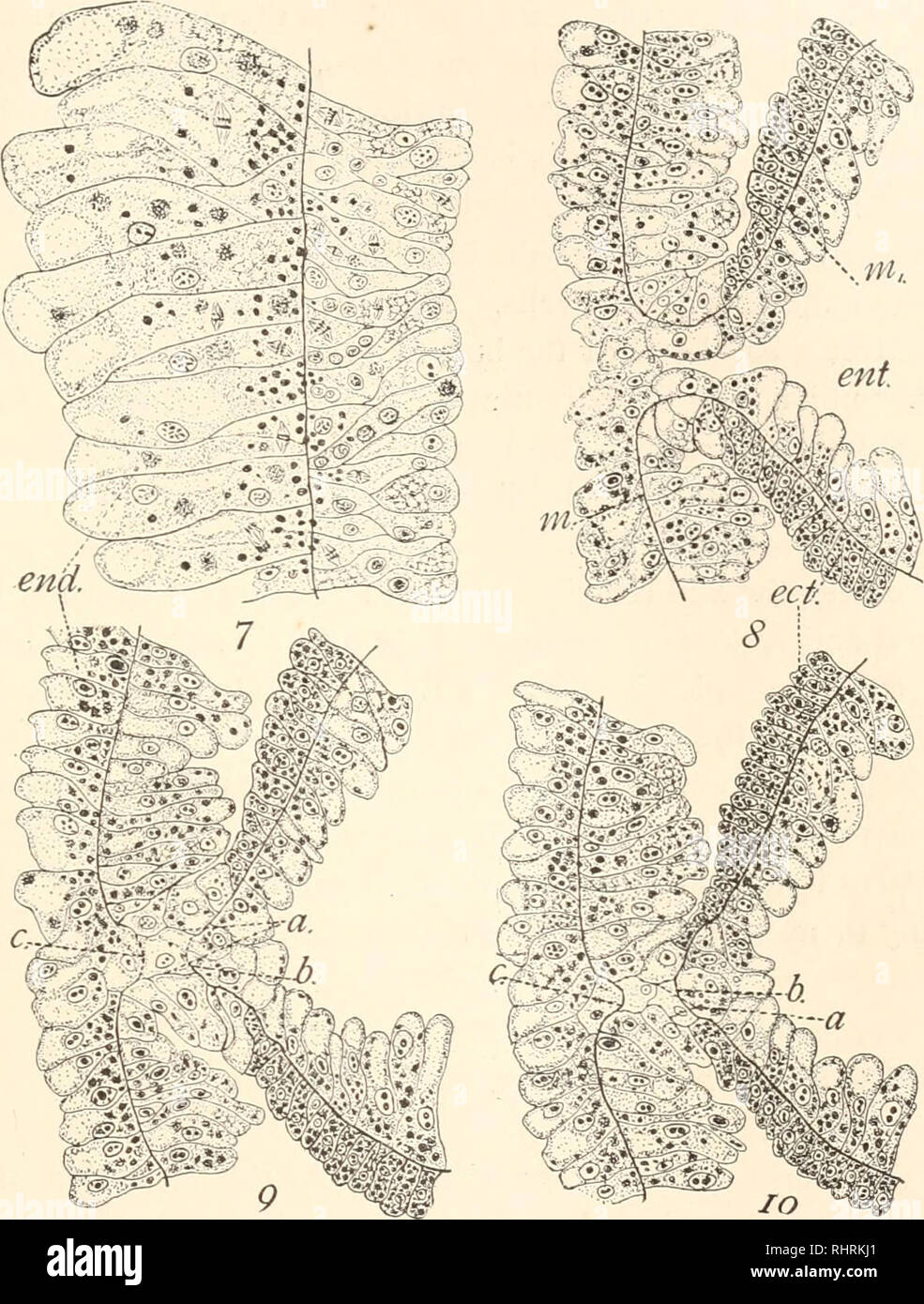 . The Biological bulletin. Biology; Zoology; Biology; Marine Biology. BUDDING IN HYDRA. 213 (Fig. 8, cct). They become more narrow, elongated and present the appearance of glandular cells. They have the power to. FIG. 7. Longitudinal section at junction of parent hydra and bud, taken at a in Fig. 6. end., endoderm. X 100. FIG. 8. Longitudinal section through base of mature bud and wall of parent hydra. ;»,, mesoglea of bud; -m, mesoglea of parent; ect., glandular ectoderm ; ent.. enteron of bud. FIG. 9. Longitudinal section showing change of mesoglea in separation of parent and bud at a, and f Stock Photohttps://www.alamy.com/image-license-details/?v=1https://www.alamy.com/the-biological-bulletin-biology-zoology-biology-marine-biology-budding-in-hydra-213-fig-8-cct-they-become-more-narrow-elongated-and-present-the-appearance-of-glandular-cells-they-have-the-power-to-fig-7-longitudinal-section-at-junction-of-parent-hydra-and-bud-taken-at-a-in-fig-6-end-endoderm-x-100-fig-8-longitudinal-section-through-base-of-mature-bud-and-wall-of-parent-hydra-mesoglea-of-bud-m-mesoglea-of-parent-ect-glandular-ectoderm-ent-enteron-of-bud-fig-9-longitudinal-section-showing-change-of-mesoglea-in-separation-of-parent-and-bud-at-a-and-f-image234704233.html
. The Biological bulletin. Biology; Zoology; Biology; Marine Biology. BUDDING IN HYDRA. 213 (Fig. 8, cct). They become more narrow, elongated and present the appearance of glandular cells. They have the power to. FIG. 7. Longitudinal section at junction of parent hydra and bud, taken at a in Fig. 6. end., endoderm. X 100. FIG. 8. Longitudinal section through base of mature bud and wall of parent hydra. ;»,, mesoglea of bud; -m, mesoglea of parent; ect., glandular ectoderm ; ent.. enteron of bud. FIG. 9. Longitudinal section showing change of mesoglea in separation of parent and bud at a, and f Stock Photohttps://www.alamy.com/image-license-details/?v=1https://www.alamy.com/the-biological-bulletin-biology-zoology-biology-marine-biology-budding-in-hydra-213-fig-8-cct-they-become-more-narrow-elongated-and-present-the-appearance-of-glandular-cells-they-have-the-power-to-fig-7-longitudinal-section-at-junction-of-parent-hydra-and-bud-taken-at-a-in-fig-6-end-endoderm-x-100-fig-8-longitudinal-section-through-base-of-mature-bud-and-wall-of-parent-hydra-mesoglea-of-bud-m-mesoglea-of-parent-ect-glandular-ectoderm-ent-enteron-of-bud-fig-9-longitudinal-section-showing-change-of-mesoglea-in-separation-of-parent-and-bud-at-a-and-f-image234704233.htmlRMRHRKJ1–. The Biological bulletin. Biology; Zoology; Biology; Marine Biology. BUDDING IN HYDRA. 213 (Fig. 8, cct). They become more narrow, elongated and present the appearance of glandular cells. They have the power to. FIG. 7. Longitudinal section at junction of parent hydra and bud, taken at a in Fig. 6. end., endoderm. X 100. FIG. 8. Longitudinal section through base of mature bud and wall of parent hydra. ;»,, mesoglea of bud; -m, mesoglea of parent; ect., glandular ectoderm ; ent.. enteron of bud. FIG. 9. Longitudinal section showing change of mesoglea in separation of parent and bud at a, and f
 . Zoology : for students and general readers . Zoology. 54 ZOOLOGY. The process of budding is but a modification of tliat in- volved in natural self-division, and it is carried on to a great extent in Hydra, a mucli larger number of individuals being produced in this way than from eggs. Our figure (3G) shows two individuals budding out from the parent Hydra ; the smaller bud («) is a simple bulging out of the body-walls, the bud enveloping a por- tion of the stomach, until it becomes con- stricted and drops off, the tentacles mean- while budding out from the distal end, and a mouth-opening ari Stock Photohttps://www.alamy.com/image-license-details/?v=1https://www.alamy.com/zoology-for-students-and-general-readers-zoology-54-zoology-the-process-of-budding-is-but-a-modification-of-tliat-in-volved-in-natural-self-division-and-it-is-carried-on-to-a-great-extent-in-hydra-a-mucli-larger-number-of-individuals-being-produced-in-this-way-than-from-eggs-our-figure-3g-shows-two-individuals-budding-out-from-the-parent-hydra-the-smaller-bud-is-a-simple-bulging-out-of-the-body-walls-the-bud-enveloping-a-por-tion-of-the-stomach-until-it-becomes-con-stricted-and-drops-off-the-tentacles-mean-while-budding-out-from-the-distal-end-and-a-mouth-opening-ari-image231938306.html
. Zoology : for students and general readers . Zoology. 54 ZOOLOGY. The process of budding is but a modification of tliat in- volved in natural self-division, and it is carried on to a great extent in Hydra, a mucli larger number of individuals being produced in this way than from eggs. Our figure (3G) shows two individuals budding out from the parent Hydra ; the smaller bud («) is a simple bulging out of the body-walls, the bud enveloping a por- tion of the stomach, until it becomes con- stricted and drops off, the tentacles mean- while budding out from the distal end, and a mouth-opening ari Stock Photohttps://www.alamy.com/image-license-details/?v=1https://www.alamy.com/zoology-for-students-and-general-readers-zoology-54-zoology-the-process-of-budding-is-but-a-modification-of-tliat-in-volved-in-natural-self-division-and-it-is-carried-on-to-a-great-extent-in-hydra-a-mucli-larger-number-of-individuals-being-produced-in-this-way-than-from-eggs-our-figure-3g-shows-two-individuals-budding-out-from-the-parent-hydra-the-smaller-bud-is-a-simple-bulging-out-of-the-body-walls-the-bud-enveloping-a-por-tion-of-the-stomach-until-it-becomes-con-stricted-and-drops-off-the-tentacles-mean-while-budding-out-from-the-distal-end-and-a-mouth-opening-ari-image231938306.htmlRMRD9KJX–. Zoology : for students and general readers . Zoology. 54 ZOOLOGY. The process of budding is but a modification of tliat in- volved in natural self-division, and it is carried on to a great extent in Hydra, a mucli larger number of individuals being produced in this way than from eggs. Our figure (3G) shows two individuals budding out from the parent Hydra ; the smaller bud («) is a simple bulging out of the body-walls, the bud enveloping a por- tion of the stomach, until it becomes con- stricted and drops off, the tentacles mean- while budding out from the distal end, and a mouth-opening ari
 . Animal biology; Human biology. Parts II & III of First course in biology. Biology. POLYPS {CUPLIKE ANIMALS}. eats and digests for the group, another defends by nettling cells, another produces eggs. Each hydra-like part of a hydroid is called a hydranth. Sometimes the buds on the hydra remain attached so long that a bud forms upon the first bud. Thus three generations are represented in one organism. Such growths show us that it is not always easy to tell what consti- tutes an indi- vidual animal. Hydro ids may be con- ceived to have been developed by the failure of budding hy- QraS LO S Stock Photohttps://www.alamy.com/image-license-details/?v=1https://www.alamy.com/animal-biology-human-biology-parts-ii-amp-iii-of-first-course-in-biology-biology-polyps-cuplike-animals-eats-and-digests-for-the-group-another-defends-by-nettling-cells-another-produces-eggs-each-hydra-like-part-of-a-hydroid-is-called-a-hydranth-sometimes-the-buds-on-the-hydra-remain-attached-so-long-that-a-bud-forms-upon-the-first-bud-thus-three-generations-are-represented-in-one-organism-such-growths-show-us-that-it-is-not-always-easy-to-tell-what-consti-tutes-an-indi-vidual-animal-hydro-ids-may-be-con-ceived-to-have-been-developed-by-the-failure-of-budding-hy-qras-lo-s-image236769180.html
. Animal biology; Human biology. Parts II & III of First course in biology. Biology. POLYPS {CUPLIKE ANIMALS}. eats and digests for the group, another defends by nettling cells, another produces eggs. Each hydra-like part of a hydroid is called a hydranth. Sometimes the buds on the hydra remain attached so long that a bud forms upon the first bud. Thus three generations are represented in one organism. Such growths show us that it is not always easy to tell what consti- tutes an indi- vidual animal. Hydro ids may be con- ceived to have been developed by the failure of budding hy- QraS LO S Stock Photohttps://www.alamy.com/image-license-details/?v=1https://www.alamy.com/animal-biology-human-biology-parts-ii-amp-iii-of-first-course-in-biology-biology-polyps-cuplike-animals-eats-and-digests-for-the-group-another-defends-by-nettling-cells-another-produces-eggs-each-hydra-like-part-of-a-hydroid-is-called-a-hydranth-sometimes-the-buds-on-the-hydra-remain-attached-so-long-that-a-bud-forms-upon-the-first-bud-thus-three-generations-are-represented-in-one-organism-such-growths-show-us-that-it-is-not-always-easy-to-tell-what-consti-tutes-an-indi-vidual-animal-hydro-ids-may-be-con-ceived-to-have-been-developed-by-the-failure-of-budding-hy-qras-lo-s-image236769180.htmlRMRN5NE4–. Animal biology; Human biology. Parts II & III of First course in biology. Biology. POLYPS {CUPLIKE ANIMALS}. eats and digests for the group, another defends by nettling cells, another produces eggs. Each hydra-like part of a hydroid is called a hydranth. Sometimes the buds on the hydra remain attached so long that a bud forms upon the first bud. Thus three generations are represented in one organism. Such growths show us that it is not always easy to tell what consti- tutes an indi- vidual animal. Hydro ids may be con- ceived to have been developed by the failure of budding hy- QraS LO S
 . A manual of zoology. THE METAZOA 73 place in a number of different classes of animals. In this form of reproduction a process or bud (Fig. 32, fid) is given off from some part of the parent animal; this bud sooner or later assumes the form of the complete animal, and may become detached from the parent either before or after its M*. Fig. 32. — Fresh-water polype (hydra), two specimens, the one expanded the other contracted, showing multiplication by budding. bdl bd- bd'6, buds in various stages of growth. (From Parker's Biology.) development has been completed, or may remain in perma- nent v Stock Photohttps://www.alamy.com/image-license-details/?v=1https://www.alamy.com/a-manual-of-zoology-the-metazoa-73-place-in-a-number-of-different-classes-of-animals-in-this-form-of-reproduction-a-process-or-bud-fig-32-fid-is-given-off-from-some-part-of-the-parent-animal-this-bud-sooner-or-later-assumes-the-form-of-the-complete-animal-and-may-become-detached-from-the-parent-either-before-or-after-its-m-fig-32-fresh-water-polype-hydra-two-specimens-the-one-expanded-the-other-contracted-showing-multiplication-by-budding-bdl-bd-bd6-buds-in-various-stages-of-growth-from-parkers-biology-development-has-been-completed-or-may-remain-in-perma-nent-v-image232109106.html
. A manual of zoology. THE METAZOA 73 place in a number of different classes of animals. In this form of reproduction a process or bud (Fig. 32, fid) is given off from some part of the parent animal; this bud sooner or later assumes the form of the complete animal, and may become detached from the parent either before or after its M*. Fig. 32. — Fresh-water polype (hydra), two specimens, the one expanded the other contracted, showing multiplication by budding. bdl bd- bd'6, buds in various stages of growth. (From Parker's Biology.) development has been completed, or may remain in perma- nent v Stock Photohttps://www.alamy.com/image-license-details/?v=1https://www.alamy.com/a-manual-of-zoology-the-metazoa-73-place-in-a-number-of-different-classes-of-animals-in-this-form-of-reproduction-a-process-or-bud-fig-32-fid-is-given-off-from-some-part-of-the-parent-animal-this-bud-sooner-or-later-assumes-the-form-of-the-complete-animal-and-may-become-detached-from-the-parent-either-before-or-after-its-m-fig-32-fresh-water-polype-hydra-two-specimens-the-one-expanded-the-other-contracted-showing-multiplication-by-budding-bdl-bd-bd6-buds-in-various-stages-of-growth-from-parkers-biology-development-has-been-completed-or-may-remain-in-perma-nent-v-image232109106.htmlRMRDHDEX–. A manual of zoology. THE METAZOA 73 place in a number of different classes of animals. In this form of reproduction a process or bud (Fig. 32, fid) is given off from some part of the parent animal; this bud sooner or later assumes the form of the complete animal, and may become detached from the parent either before or after its M*. Fig. 32. — Fresh-water polype (hydra), two specimens, the one expanded the other contracted, showing multiplication by budding. bdl bd- bd'6, buds in various stages of growth. (From Parker's Biology.) development has been completed, or may remain in perma- nent v
 . Zoology for high schools and colleges. Zoology. 54 ZOOLOGY. The process of bndding is but a modification of that in- volved in natural self-division, and it is carried on to a great extent in Hydra, a much larger number of individuals being produced in this way than from eggs. Our figure (36) shows two individuals budding out from the parent Hydra; the smaller bud (a) is a simple bulging out of the body-walls, the bud enveloj)ing a por- tion of the stomach, until, it becomes con- stricted and drops off, the tentacles mean- while budding out from the distal end, and a mouth-opening arising be Stock Photohttps://www.alamy.com/image-license-details/?v=1https://www.alamy.com/zoology-for-high-schools-and-colleges-zoology-54-zoology-the-process-of-bndding-is-but-a-modification-of-that-in-volved-in-natural-self-division-and-it-is-carried-on-to-a-great-extent-in-hydra-a-much-larger-number-of-individuals-being-produced-in-this-way-than-from-eggs-our-figure-36-shows-two-individuals-budding-out-from-the-parent-hydra-the-smaller-bud-a-is-a-simple-bulging-out-of-the-body-walls-the-bud-envelojing-a-por-tion-of-the-stomach-until-it-becomes-con-stricted-and-drops-off-the-tentacles-mean-while-budding-out-from-the-distal-end-and-a-mouth-opening-arising-be-image232348612.html
. Zoology for high schools and colleges. Zoology. 54 ZOOLOGY. The process of bndding is but a modification of that in- volved in natural self-division, and it is carried on to a great extent in Hydra, a much larger number of individuals being produced in this way than from eggs. Our figure (36) shows two individuals budding out from the parent Hydra; the smaller bud (a) is a simple bulging out of the body-walls, the bud enveloj)ing a por- tion of the stomach, until, it becomes con- stricted and drops off, the tentacles mean- while budding out from the distal end, and a mouth-opening arising be Stock Photohttps://www.alamy.com/image-license-details/?v=1https://www.alamy.com/zoology-for-high-schools-and-colleges-zoology-54-zoology-the-process-of-bndding-is-but-a-modification-of-that-in-volved-in-natural-self-division-and-it-is-carried-on-to-a-great-extent-in-hydra-a-much-larger-number-of-individuals-being-produced-in-this-way-than-from-eggs-our-figure-36-shows-two-individuals-budding-out-from-the-parent-hydra-the-smaller-bud-a-is-a-simple-bulging-out-of-the-body-walls-the-bud-envelojing-a-por-tion-of-the-stomach-until-it-becomes-con-stricted-and-drops-off-the-tentacles-mean-while-budding-out-from-the-distal-end-and-a-mouth-opening-arising-be-image232348612.htmlRMRE0B0M–. Zoology for high schools and colleges. Zoology. 54 ZOOLOGY. The process of bndding is but a modification of that in- volved in natural self-division, and it is carried on to a great extent in Hydra, a much larger number of individuals being produced in this way than from eggs. Our figure (36) shows two individuals budding out from the parent Hydra; the smaller bud (a) is a simple bulging out of the body-walls, the bud enveloj)ing a por- tion of the stomach, until, it becomes con- stricted and drops off, the tentacles mean- while budding out from the distal end, and a mouth-opening arising be
 . The biology of hydra and of some other coelenterates, 1961. Hydra; Cnidaria; Ctenophora; Cnidaria; Hydra. 444 THE BIOLOGY OF HYDRA : 1961. 10 SB 20 30 MB 40 50 60 ST HOURS AFTER FEEDING 70 LT Fig. 3. DNA, RNA, and protein content of Hydra in different stages of budding. The symbols SB, MB, ST, and LT represent the small bud, medium bud, short tentacled, and long tentacled stage animals. These data reveal the first major chemical difference between par- ent and bud tissues, the DNA/ protein ratio of the bud being three times that of the parent Hydra. Since the experiments in Figure 3 gave no Stock Photohttps://www.alamy.com/image-license-details/?v=1https://www.alamy.com/the-biology-of-hydra-and-of-some-other-coelenterates-1961-hydra-cnidaria-ctenophora-cnidaria-hydra-444-the-biology-of-hydra-1961-10-sb-20-30-mb-40-50-60-st-hours-after-feeding-70-lt-fig-3-dna-rna-and-protein-content-of-hydra-in-different-stages-of-budding-the-symbols-sb-mb-st-and-lt-represent-the-small-bud-medium-bud-short-tentacled-and-long-tentacled-stage-animals-these-data-reveal-the-first-major-chemical-difference-between-par-ent-and-bud-tissues-the-dna-protein-ratio-of-the-bud-being-three-times-that-of-the-parent-hydra-since-the-experiments-in-figure-3-gave-no-image234604149.html
. The biology of hydra and of some other coelenterates, 1961. Hydra; Cnidaria; Ctenophora; Cnidaria; Hydra. 444 THE BIOLOGY OF HYDRA : 1961. 10 SB 20 30 MB 40 50 60 ST HOURS AFTER FEEDING 70 LT Fig. 3. DNA, RNA, and protein content of Hydra in different stages of budding. The symbols SB, MB, ST, and LT represent the small bud, medium bud, short tentacled, and long tentacled stage animals. These data reveal the first major chemical difference between par- ent and bud tissues, the DNA/ protein ratio of the bud being three times that of the parent Hydra. Since the experiments in Figure 3 gave no Stock Photohttps://www.alamy.com/image-license-details/?v=1https://www.alamy.com/the-biology-of-hydra-and-of-some-other-coelenterates-1961-hydra-cnidaria-ctenophora-cnidaria-hydra-444-the-biology-of-hydra-1961-10-sb-20-30-mb-40-50-60-st-hours-after-feeding-70-lt-fig-3-dna-rna-and-protein-content-of-hydra-in-different-stages-of-budding-the-symbols-sb-mb-st-and-lt-represent-the-small-bud-medium-bud-short-tentacled-and-long-tentacled-stage-animals-these-data-reveal-the-first-major-chemical-difference-between-par-ent-and-bud-tissues-the-dna-protein-ratio-of-the-bud-being-three-times-that-of-the-parent-hydra-since-the-experiments-in-figure-3-gave-no-image234604149.htmlRMRHK3YH–. The biology of hydra and of some other coelenterates, 1961. Hydra; Cnidaria; Ctenophora; Cnidaria; Hydra. 444 THE BIOLOGY OF HYDRA : 1961. 10 SB 20 30 MB 40 50 60 ST HOURS AFTER FEEDING 70 LT Fig. 3. DNA, RNA, and protein content of Hydra in different stages of budding. The symbols SB, MB, ST, and LT represent the small bud, medium bud, short tentacled, and long tentacled stage animals. These data reveal the first major chemical difference between par- ent and bud tissues, the DNA/ protein ratio of the bud being three times that of the parent Hydra. Since the experiments in Figure 3 gave no